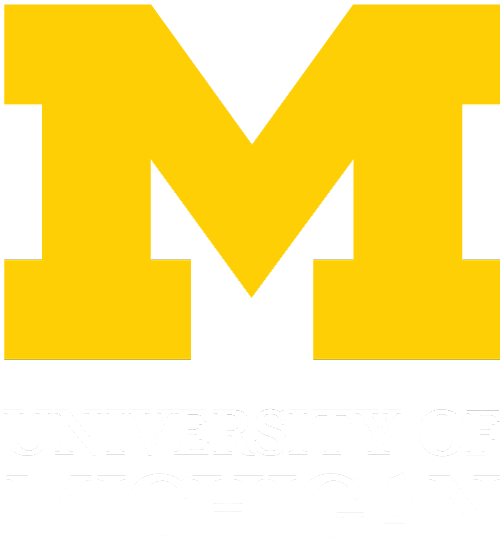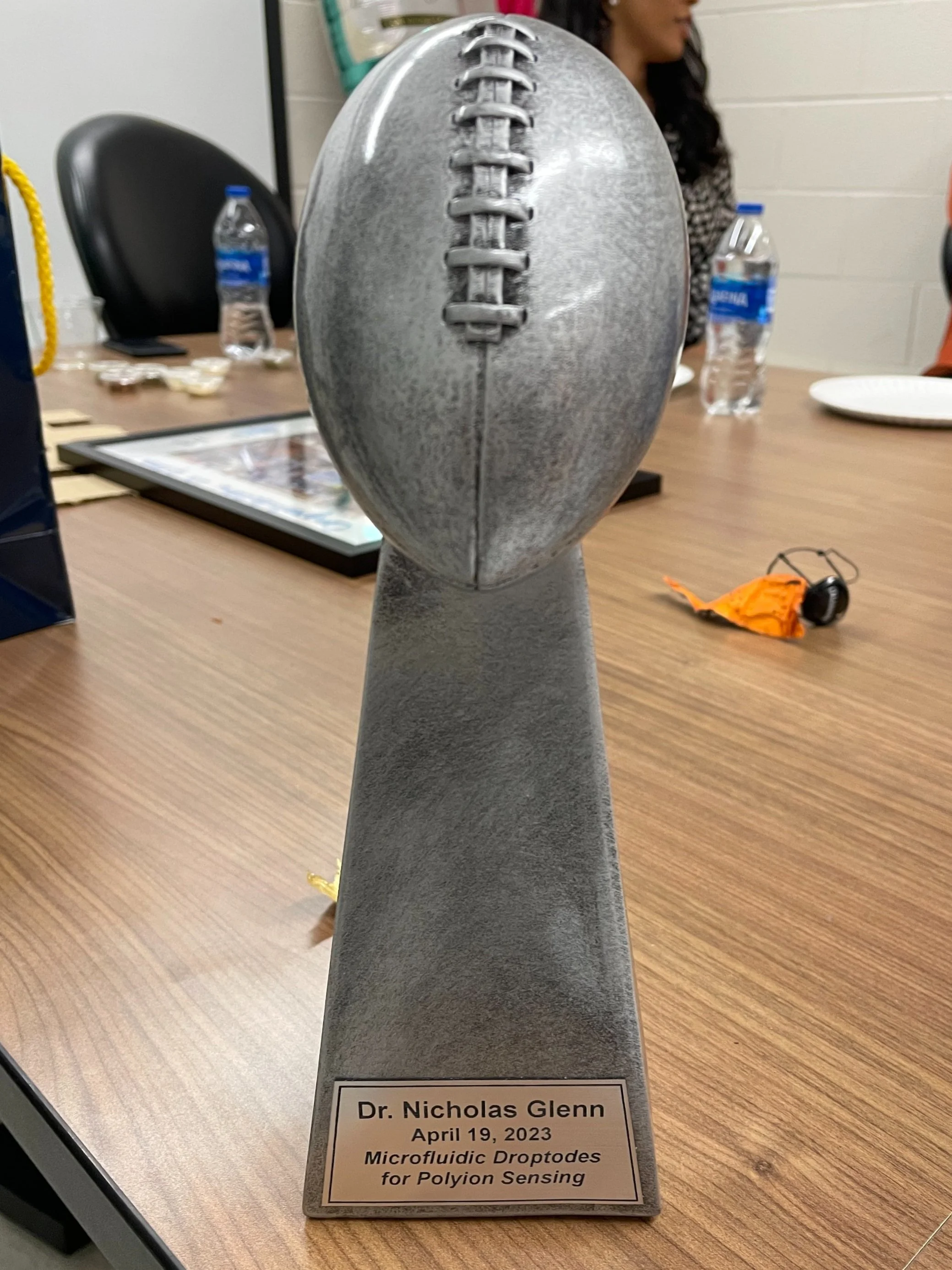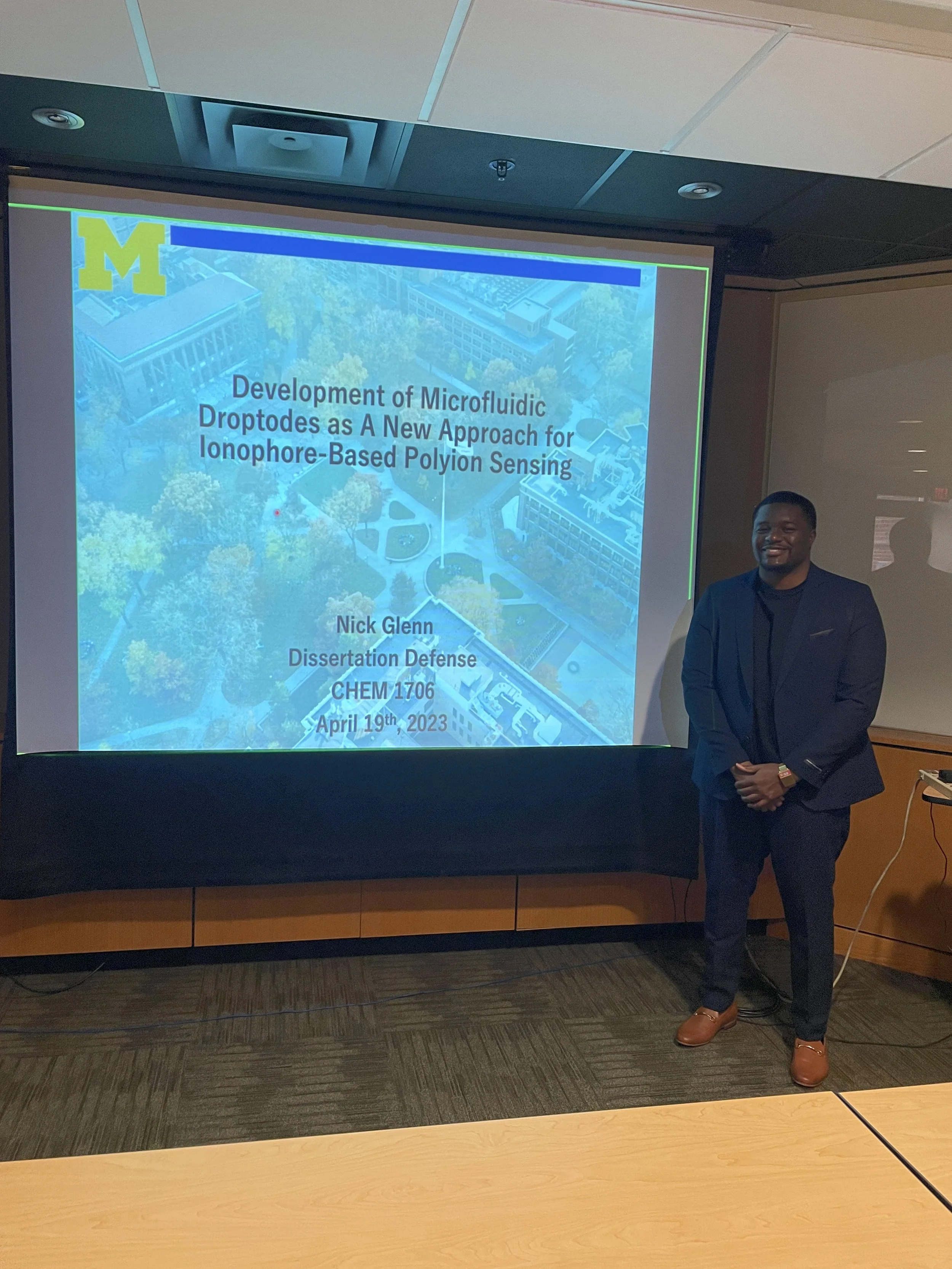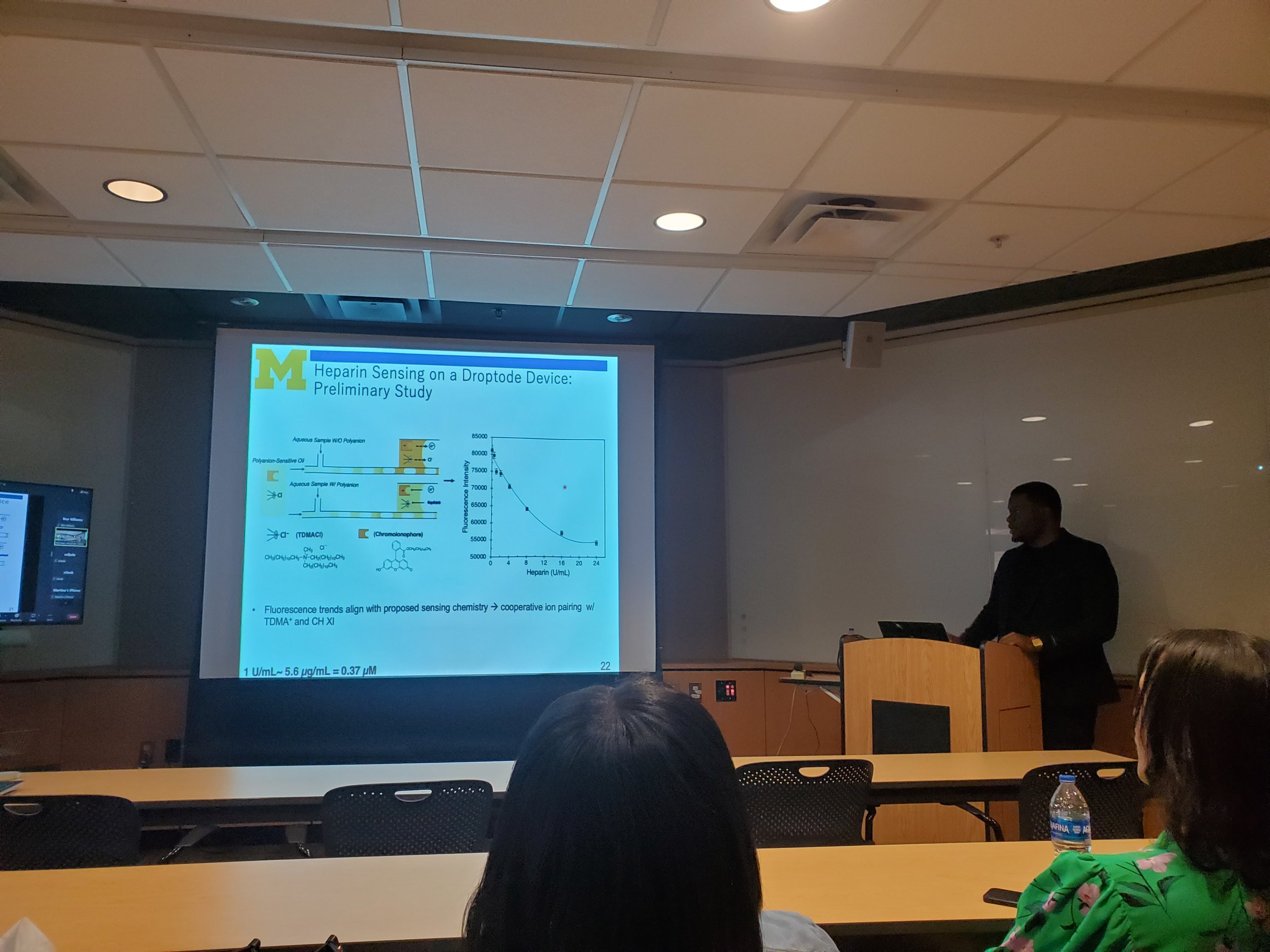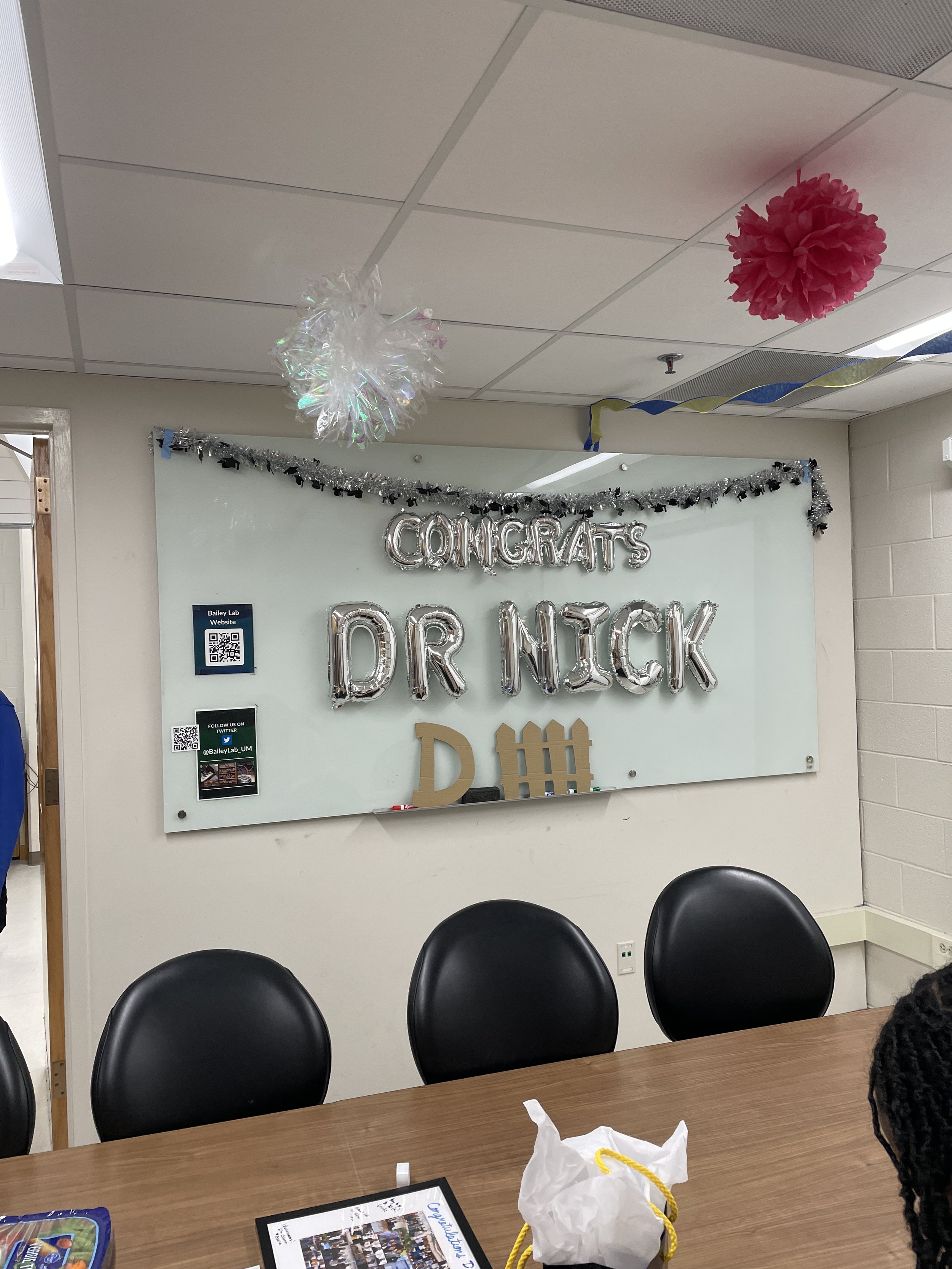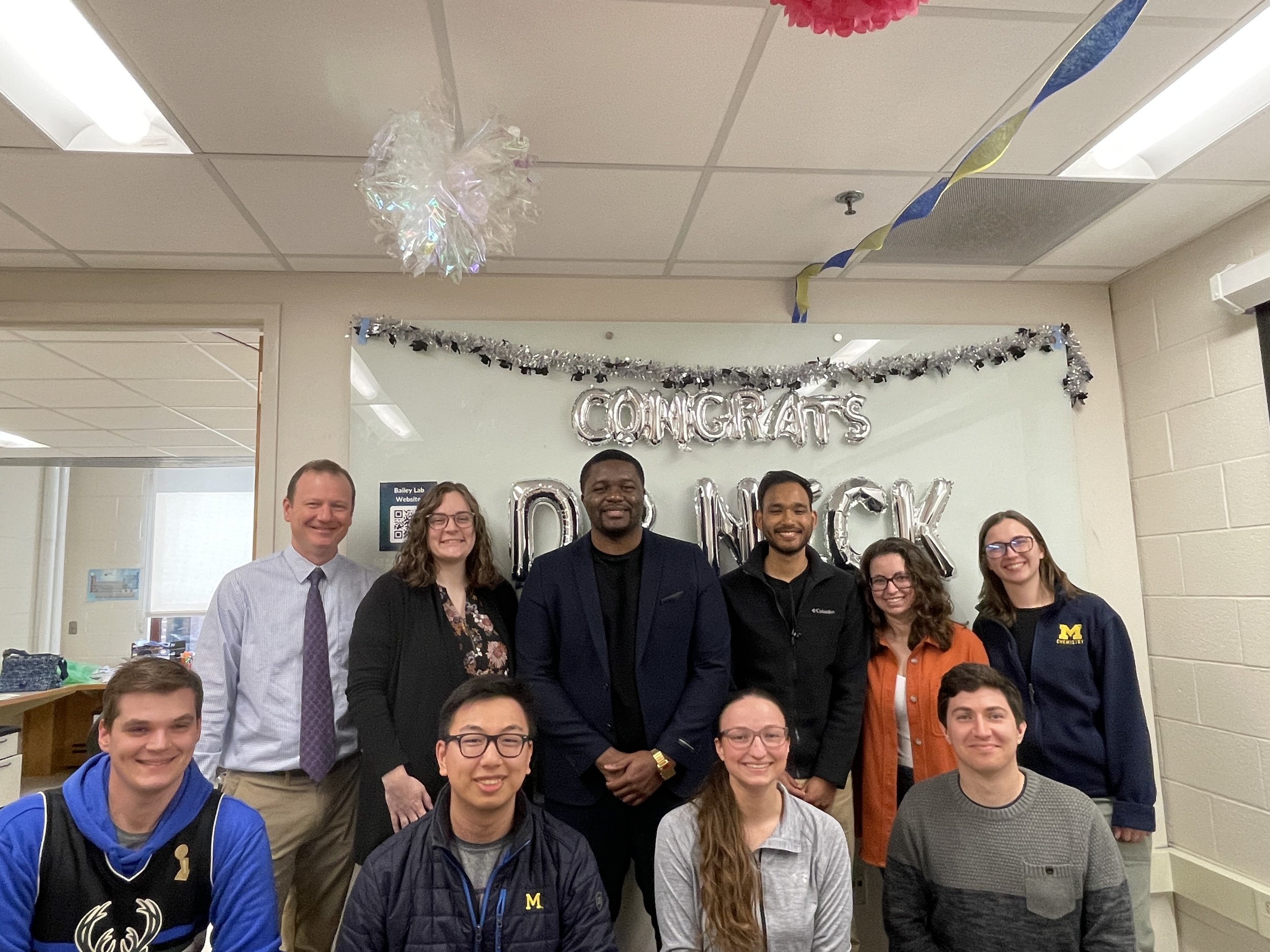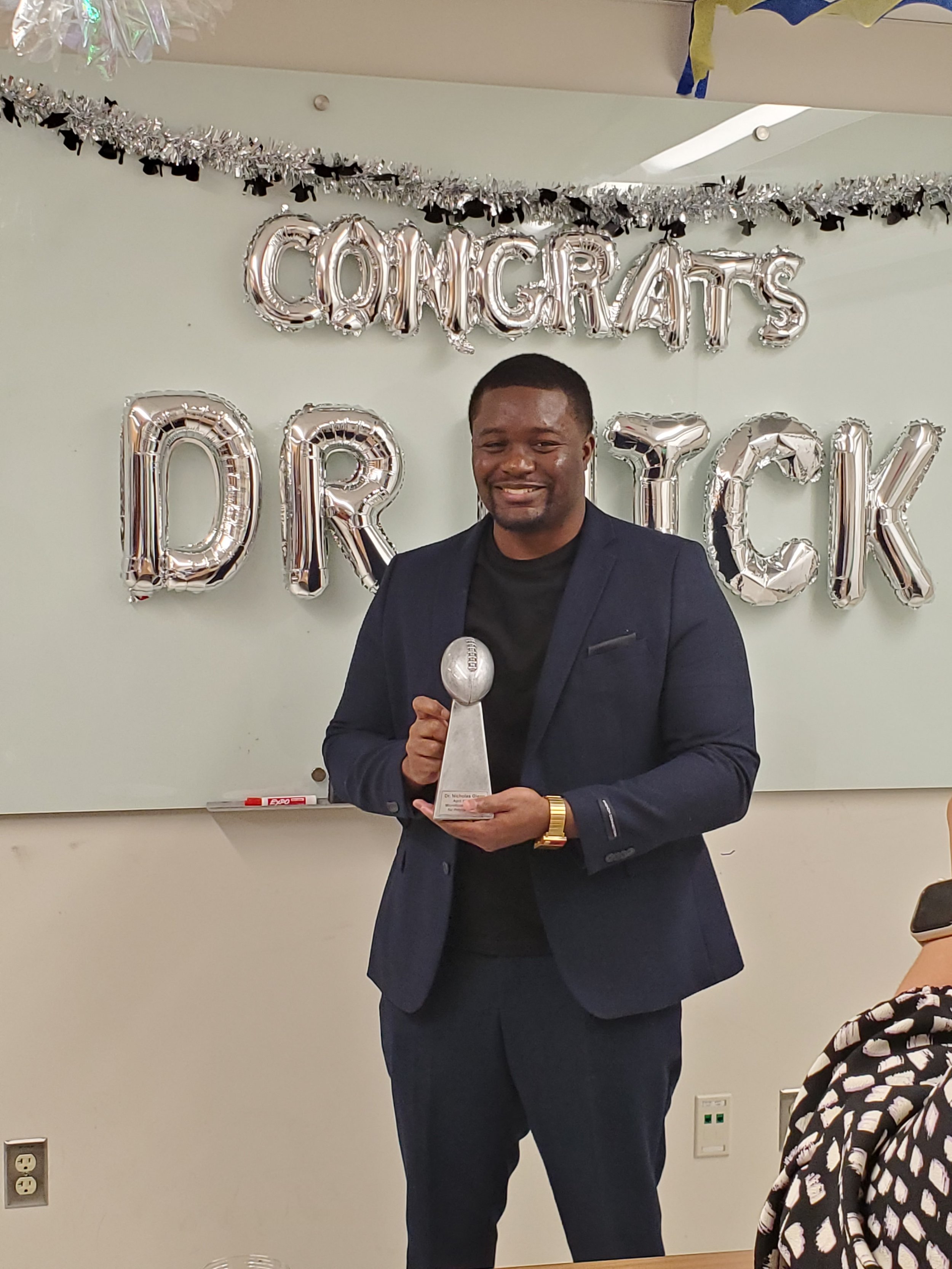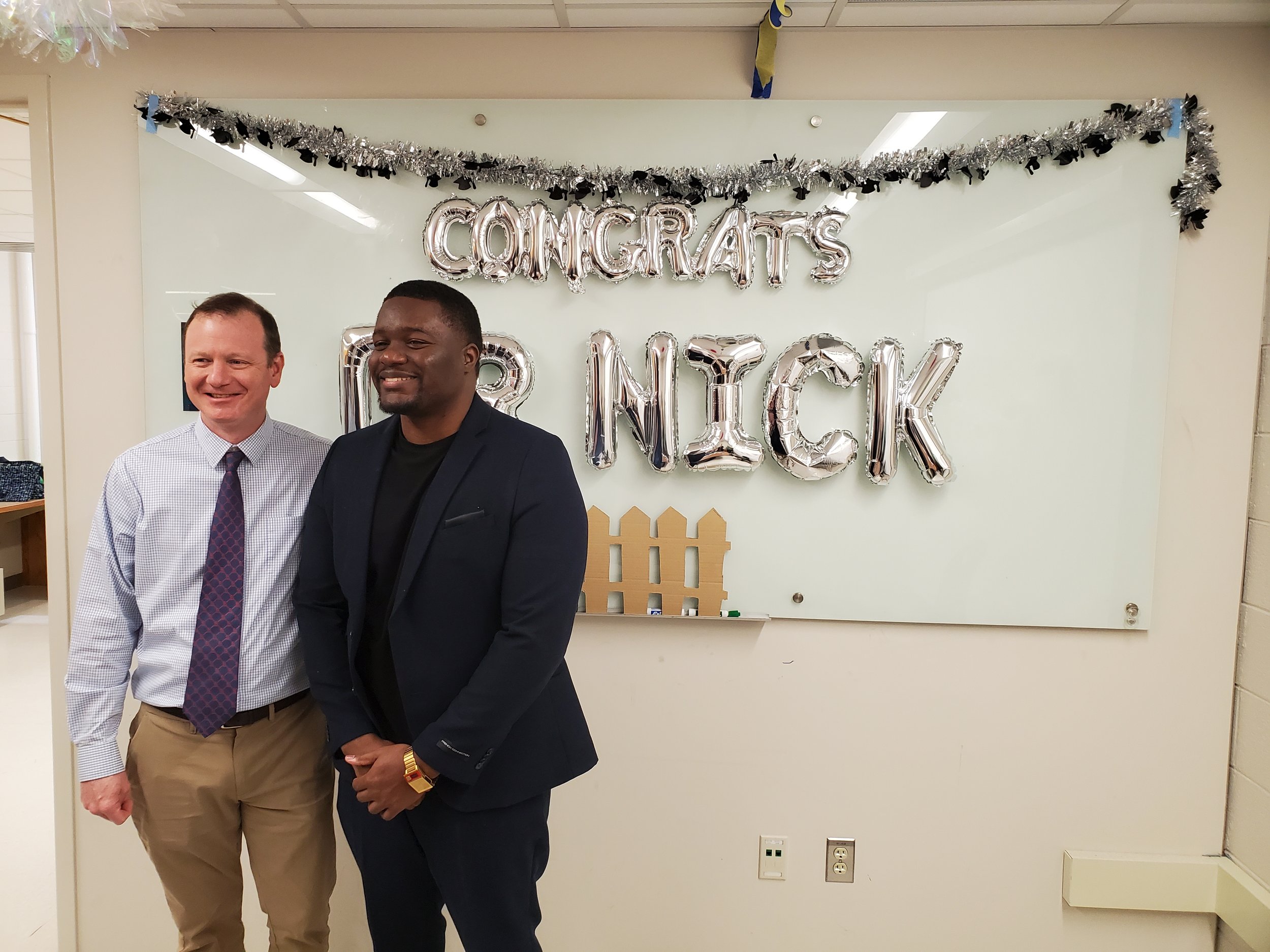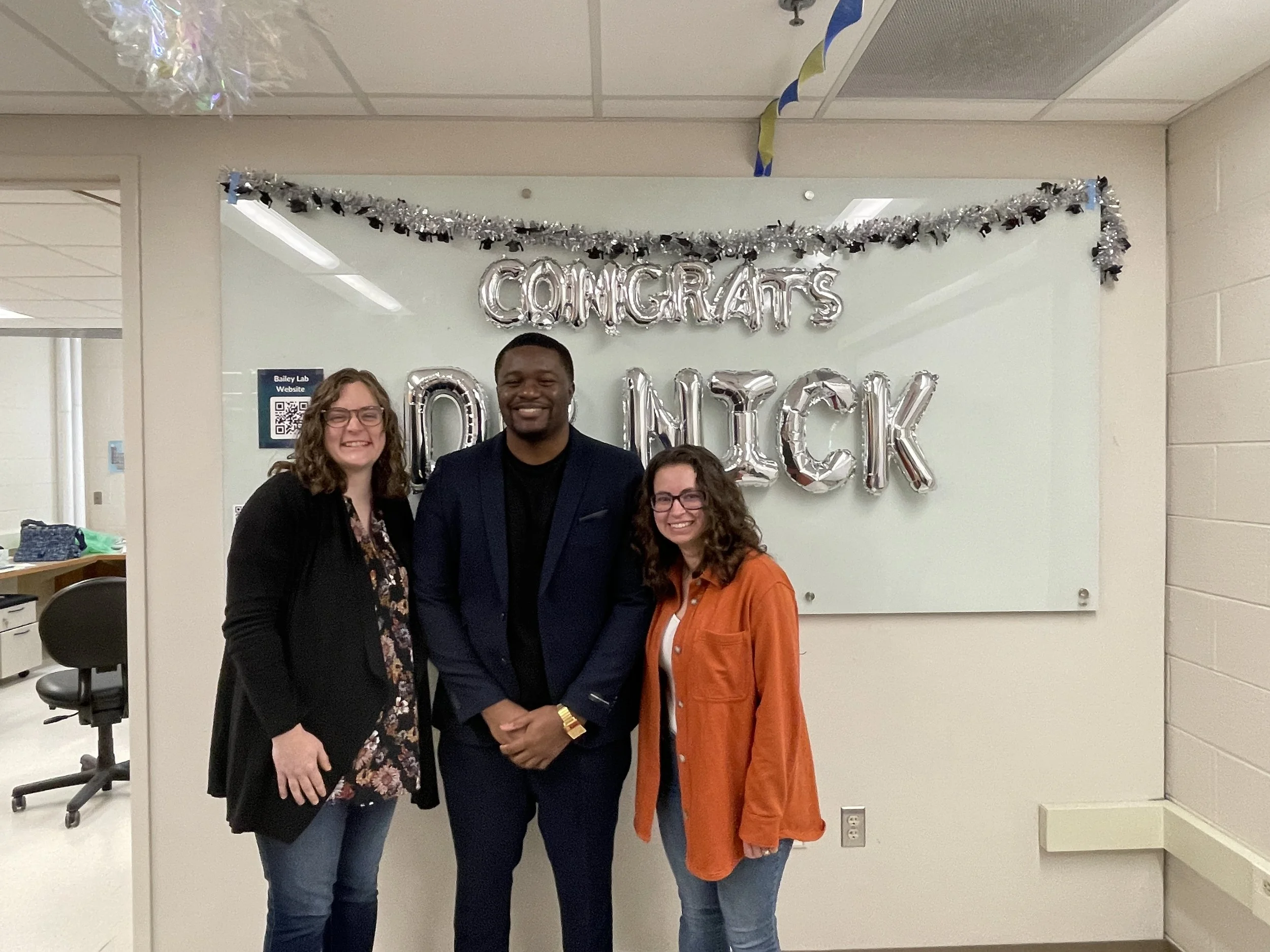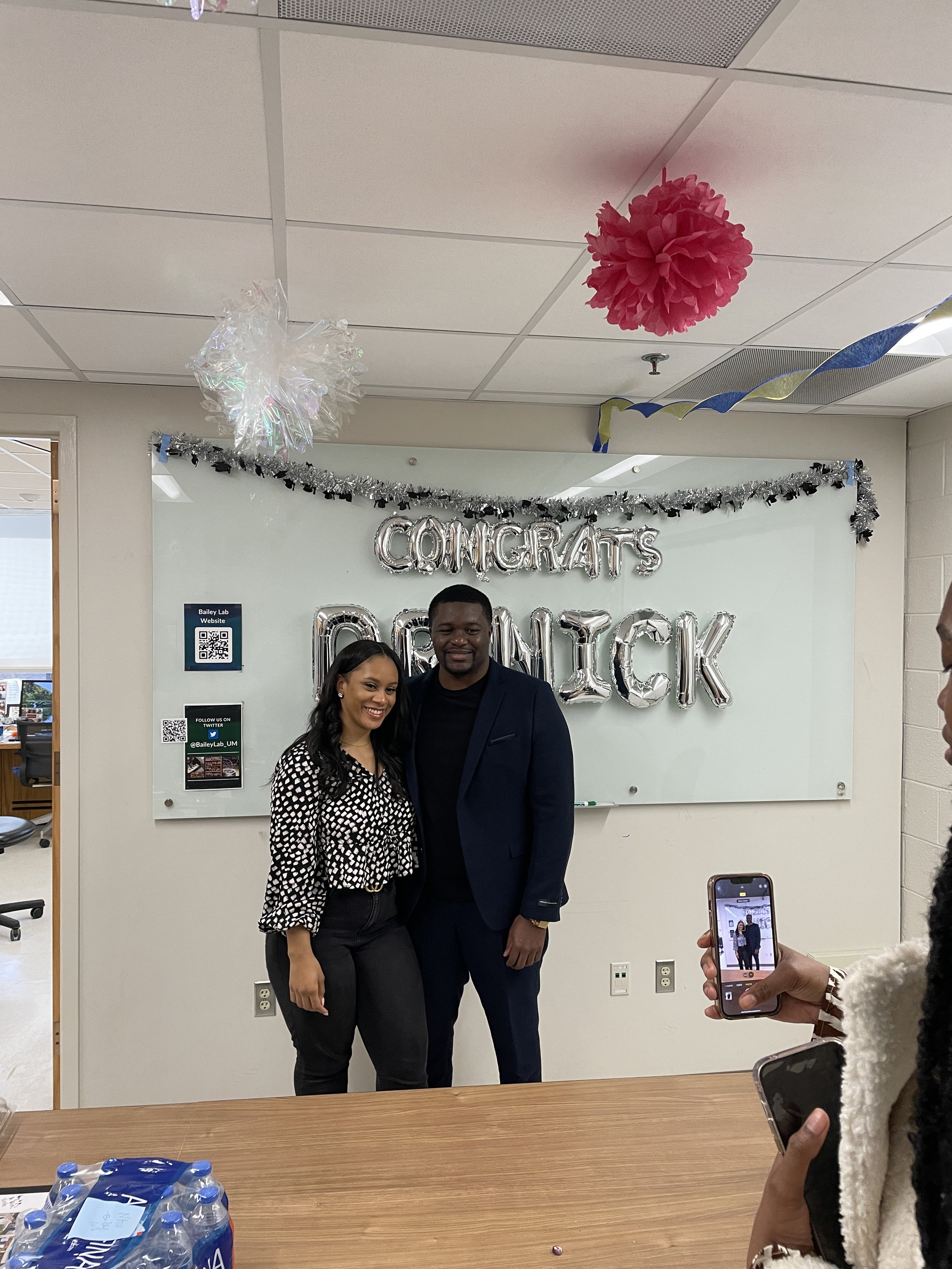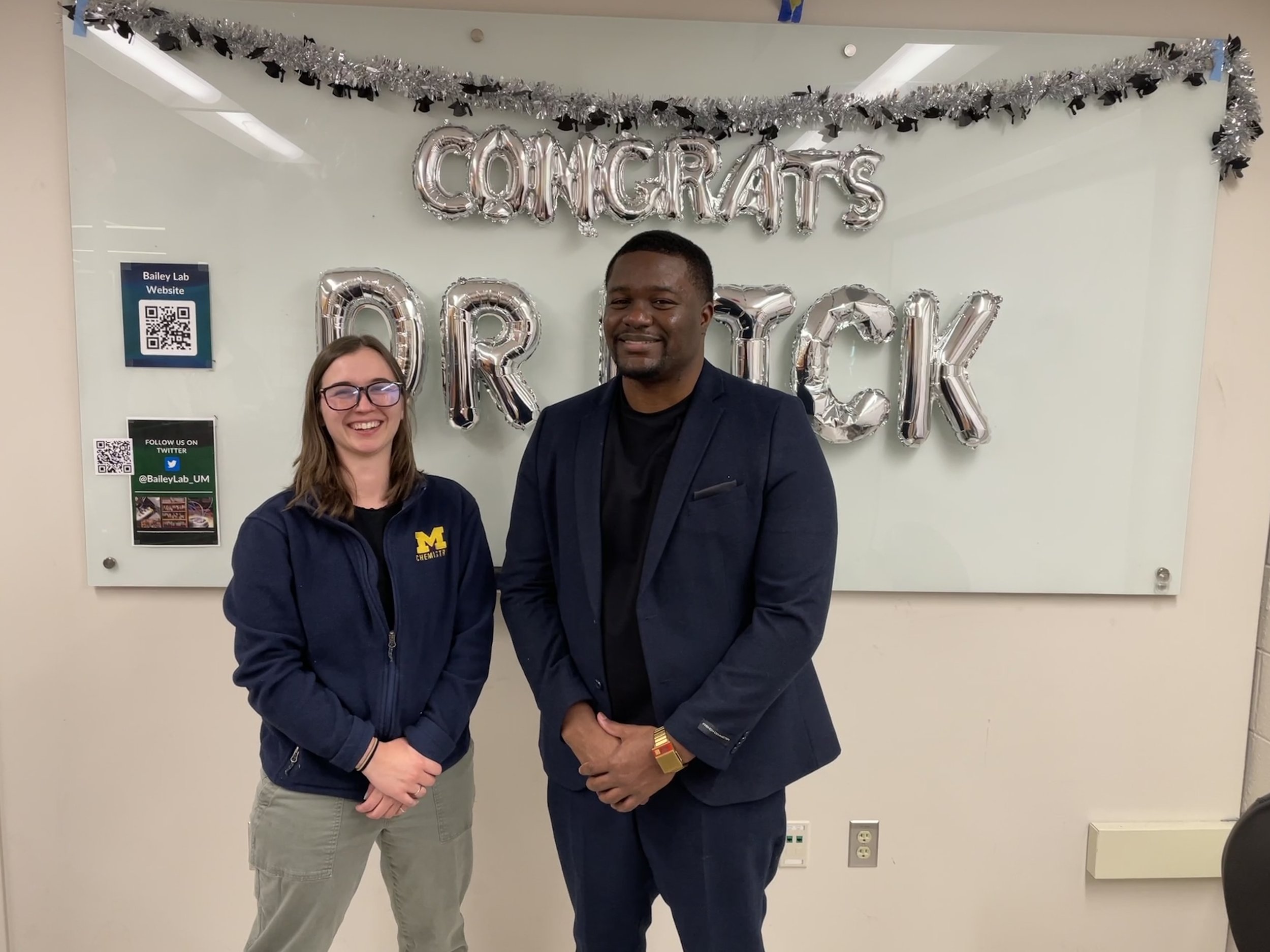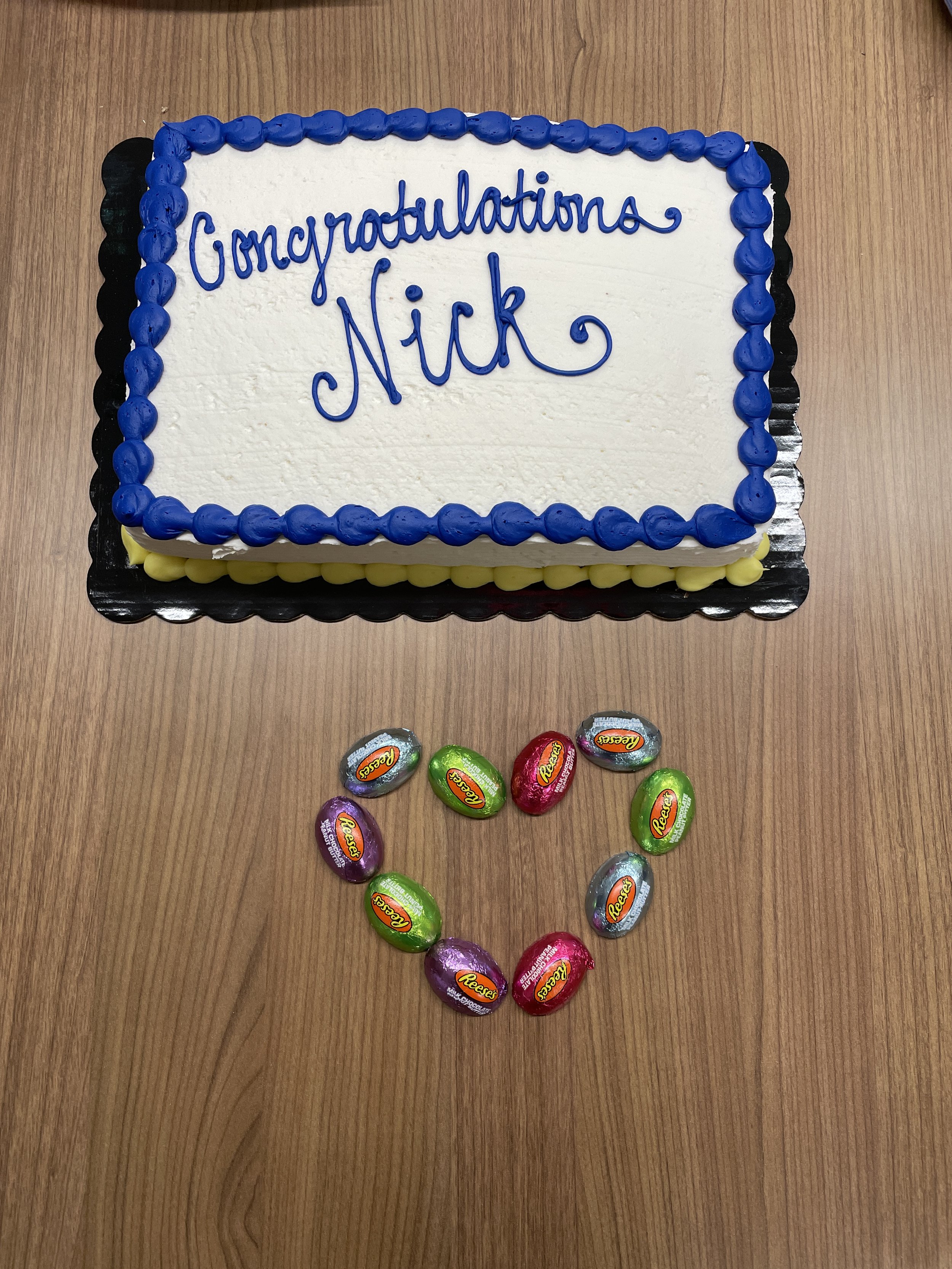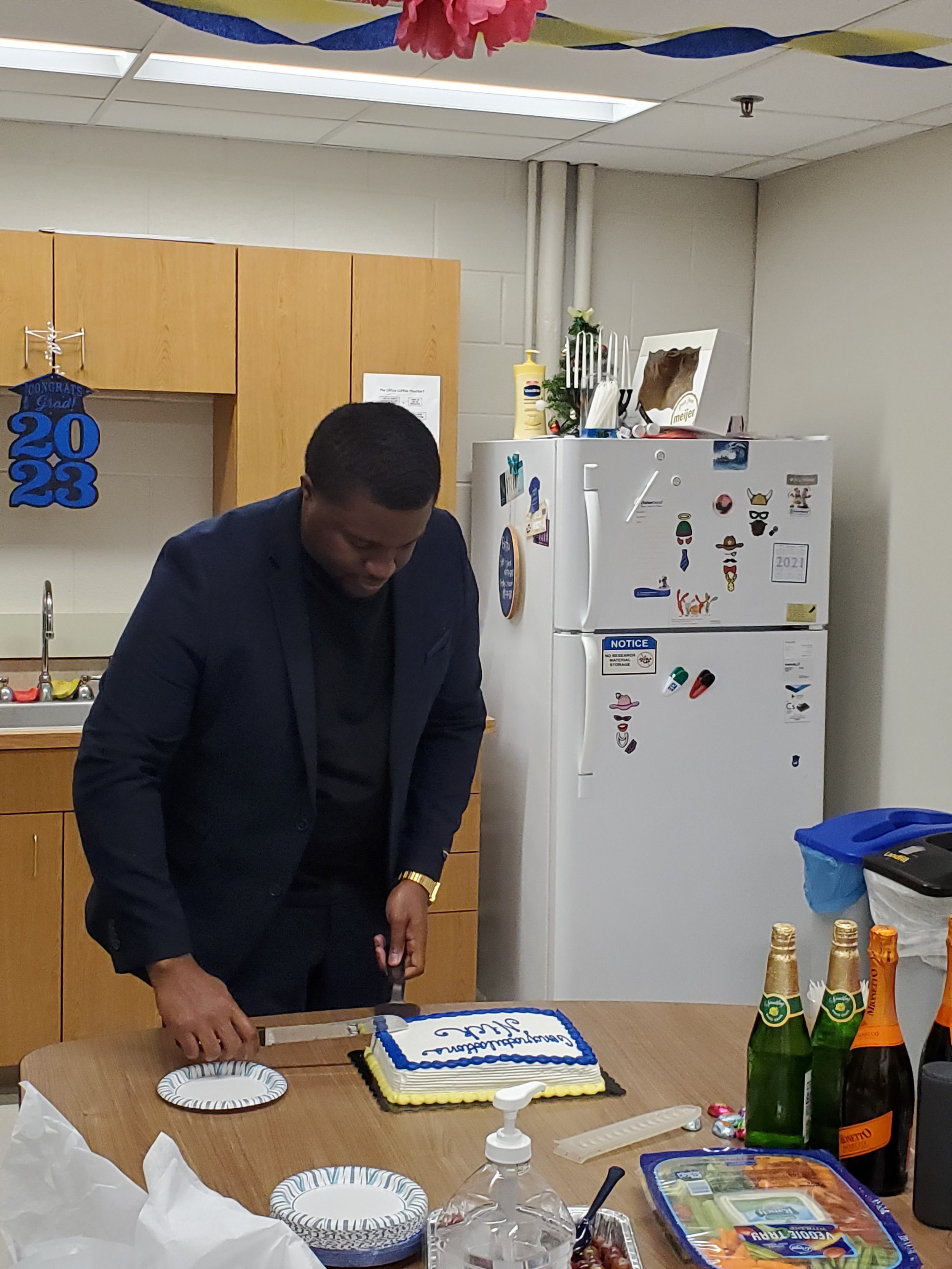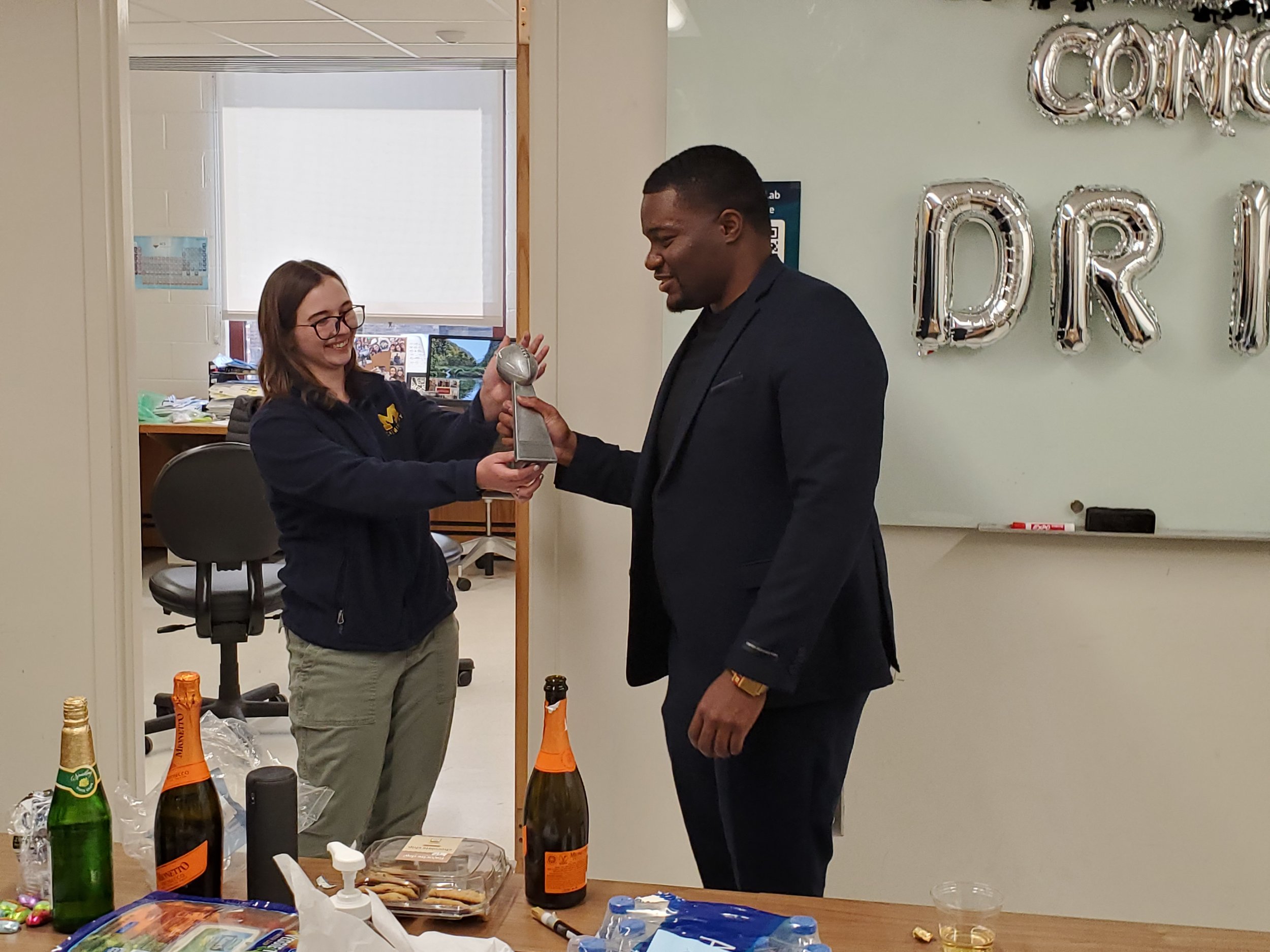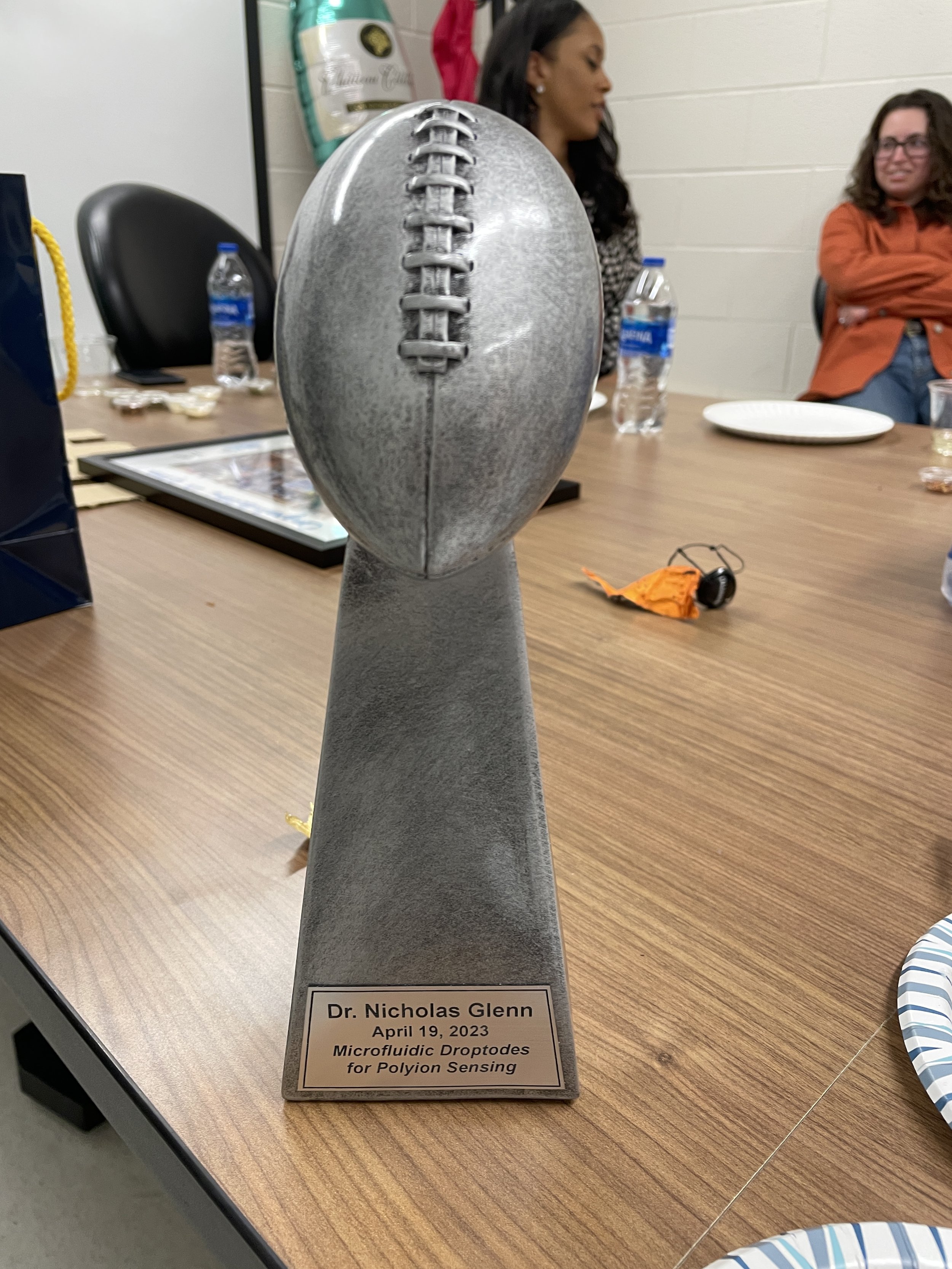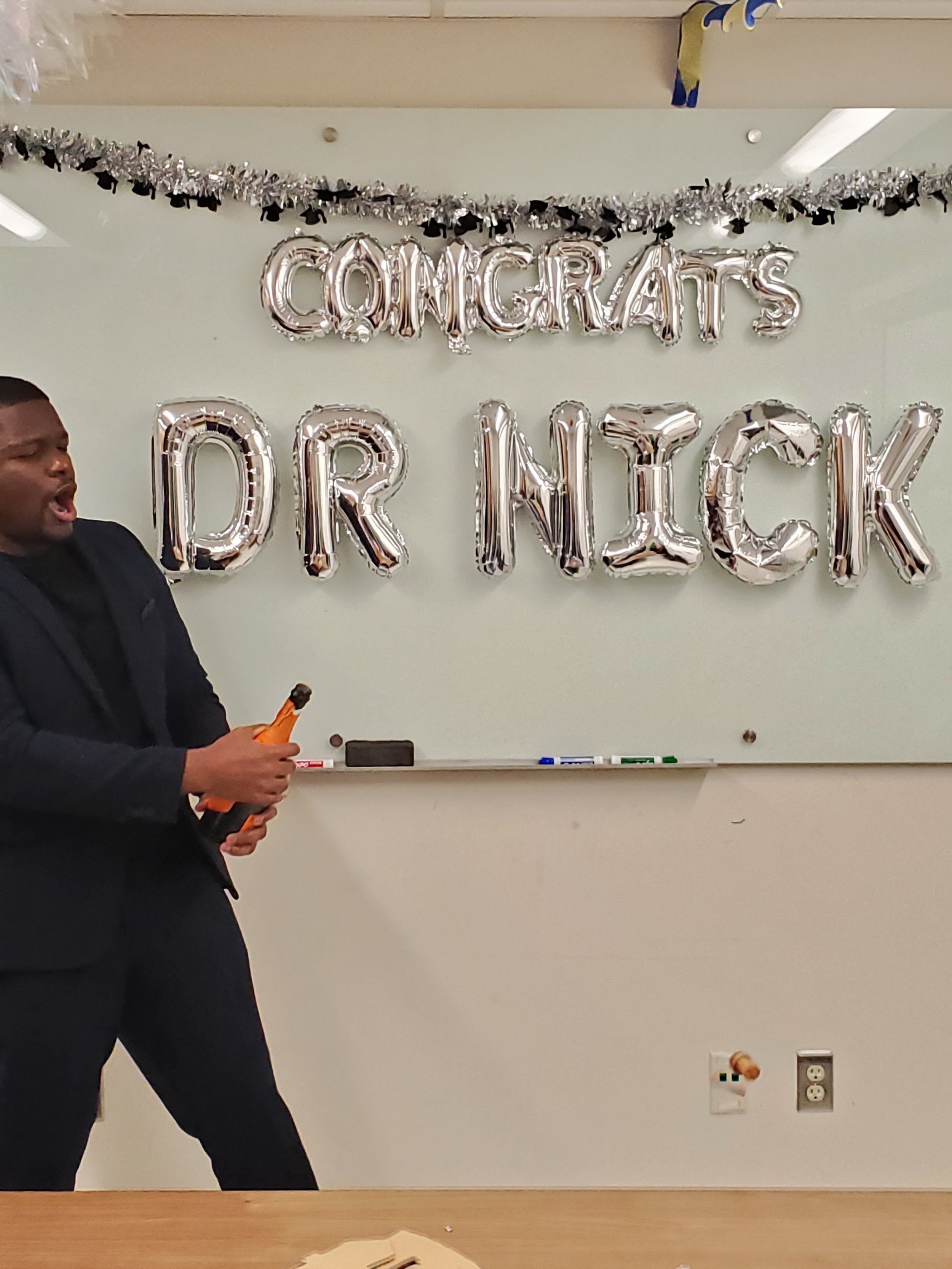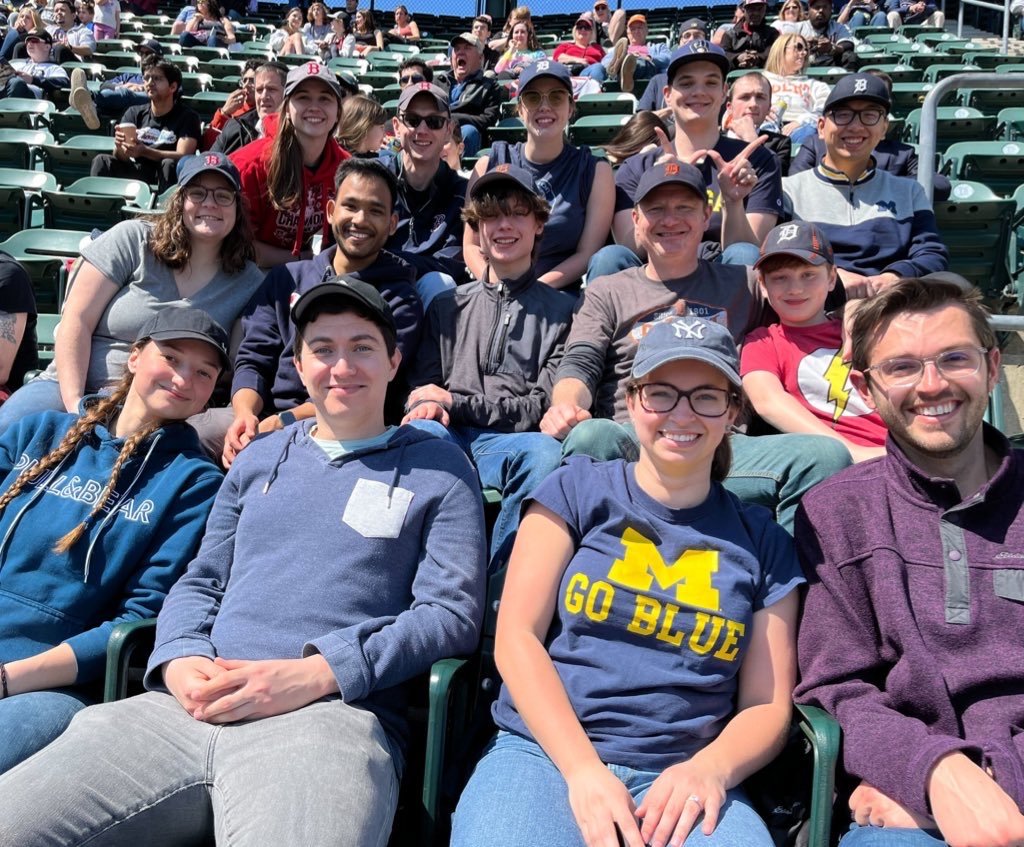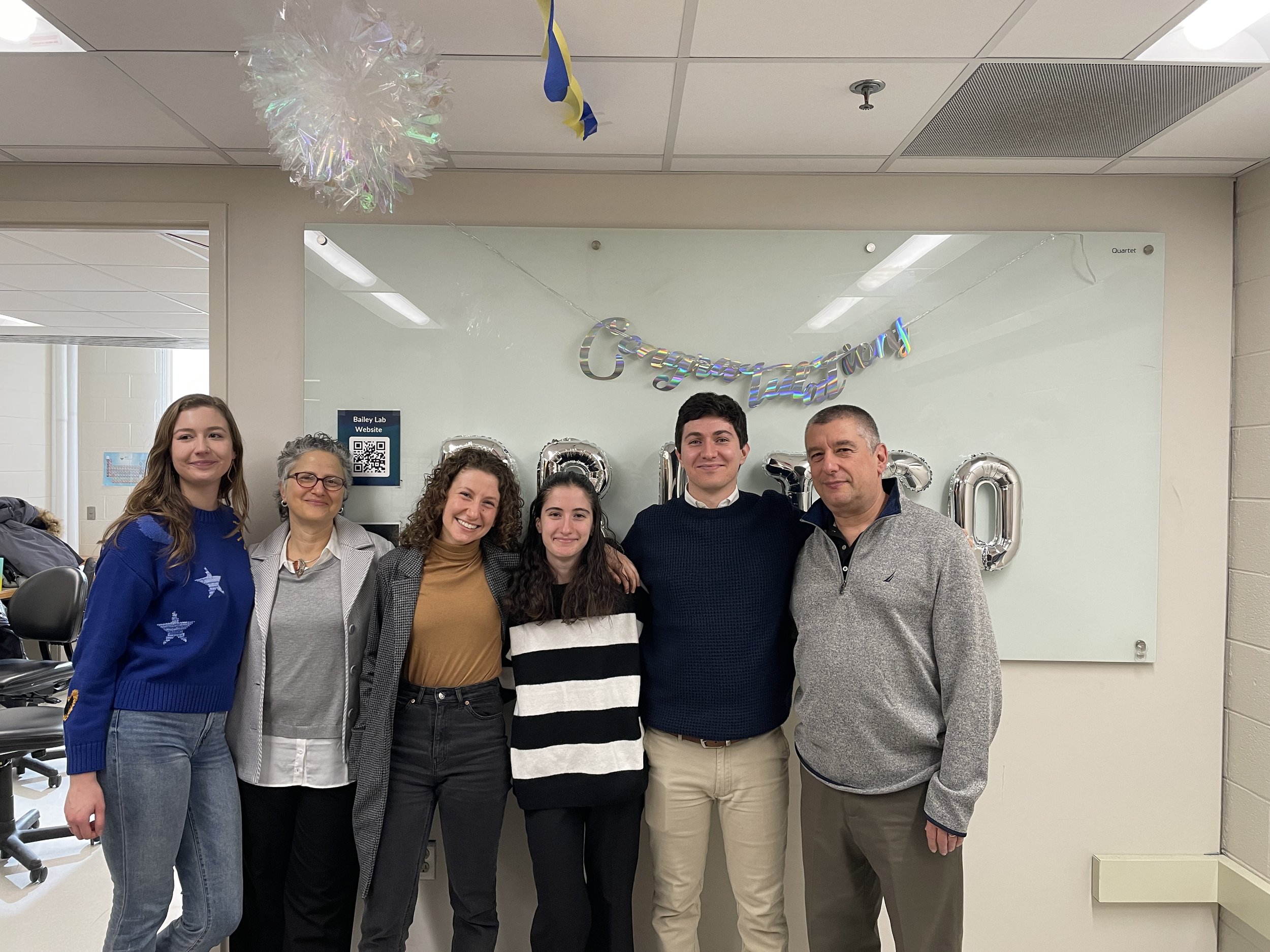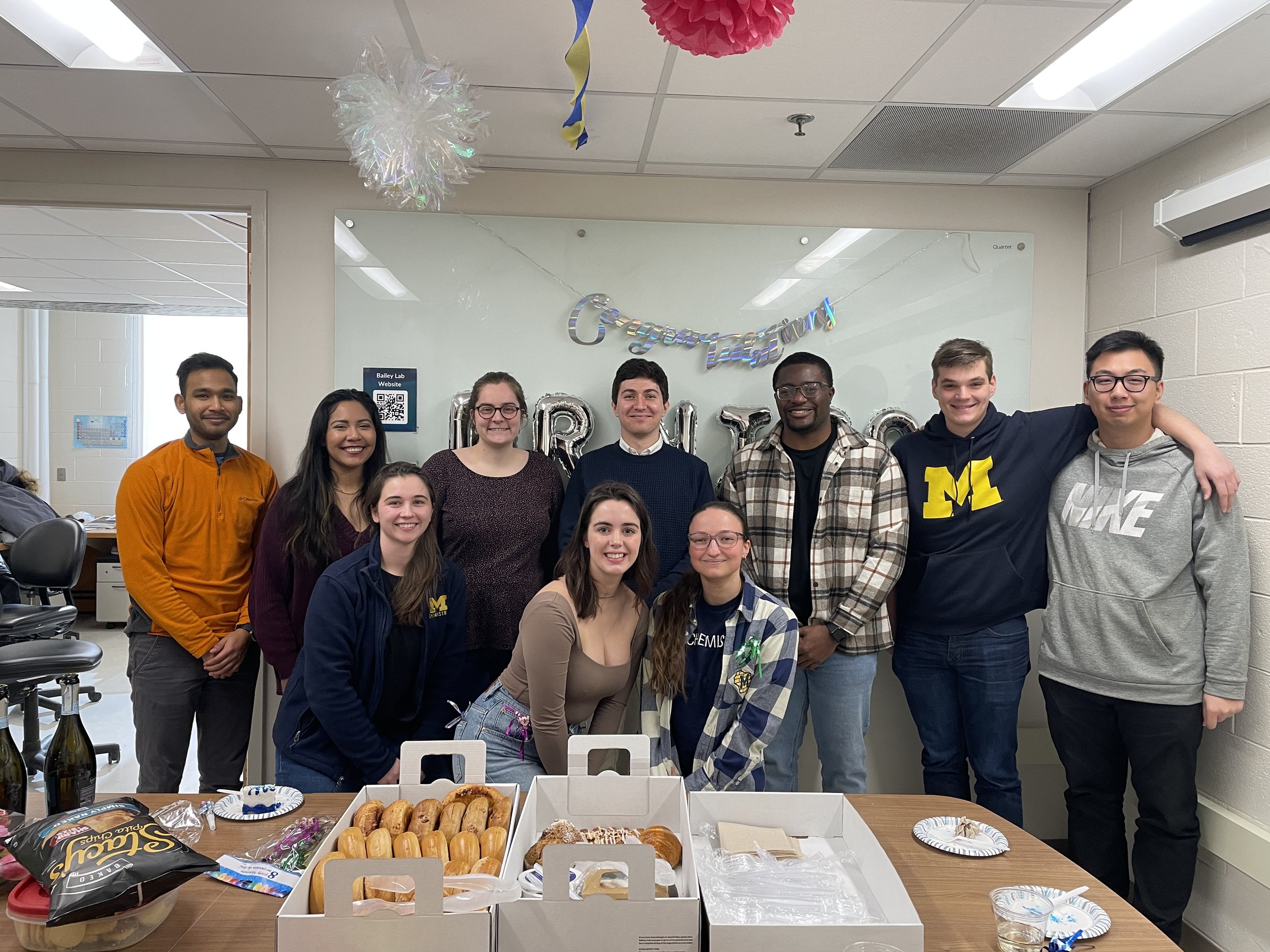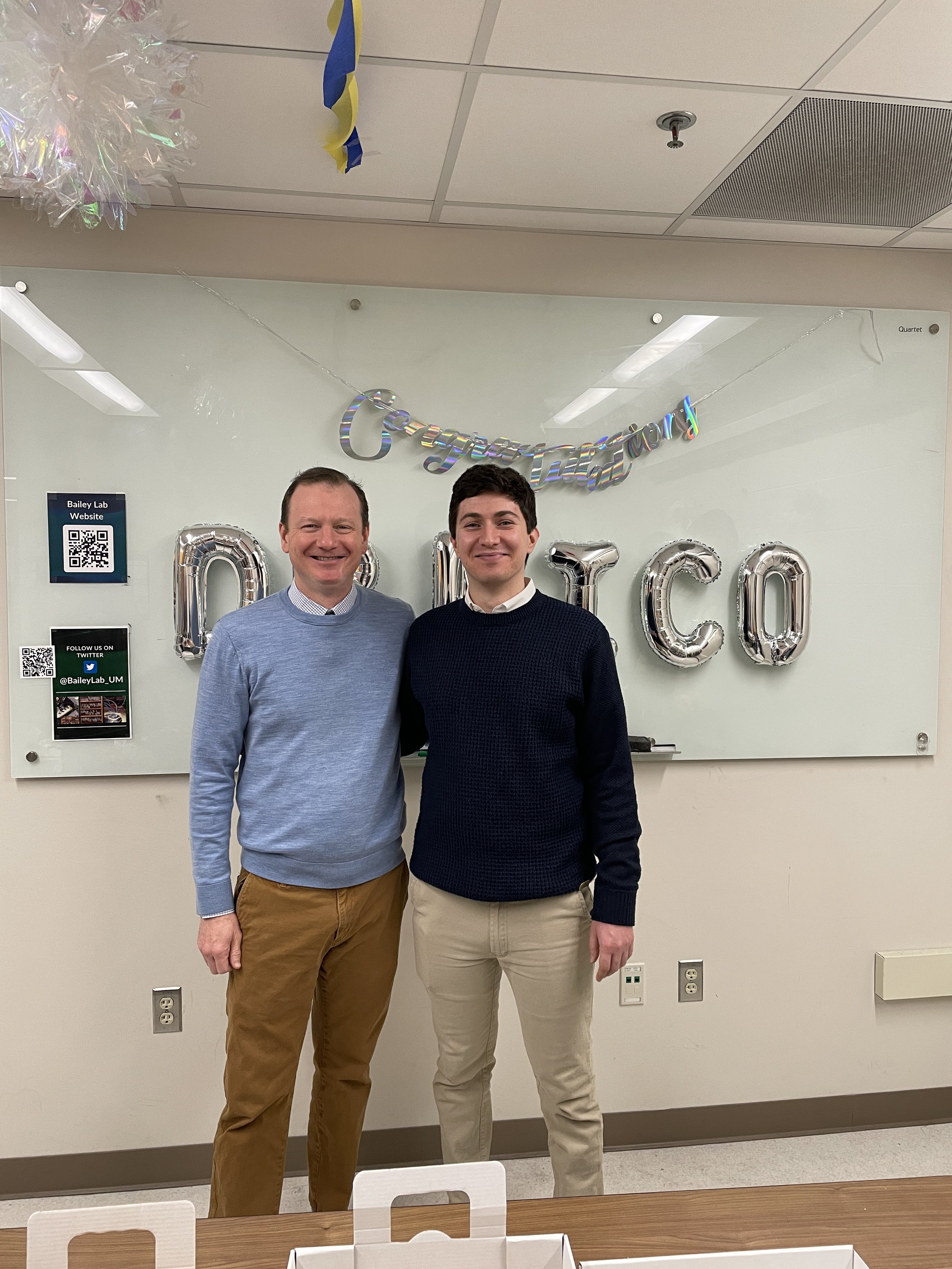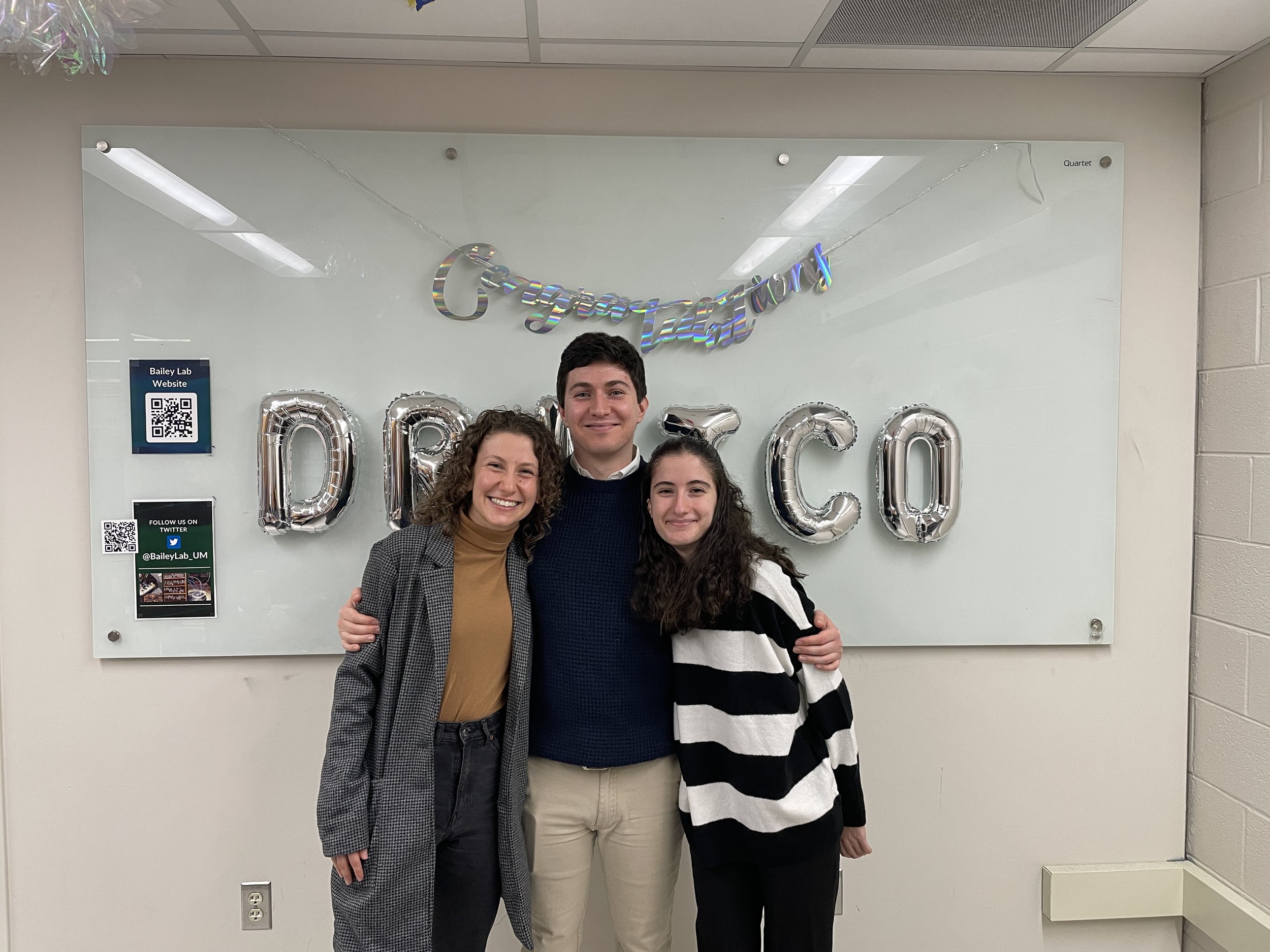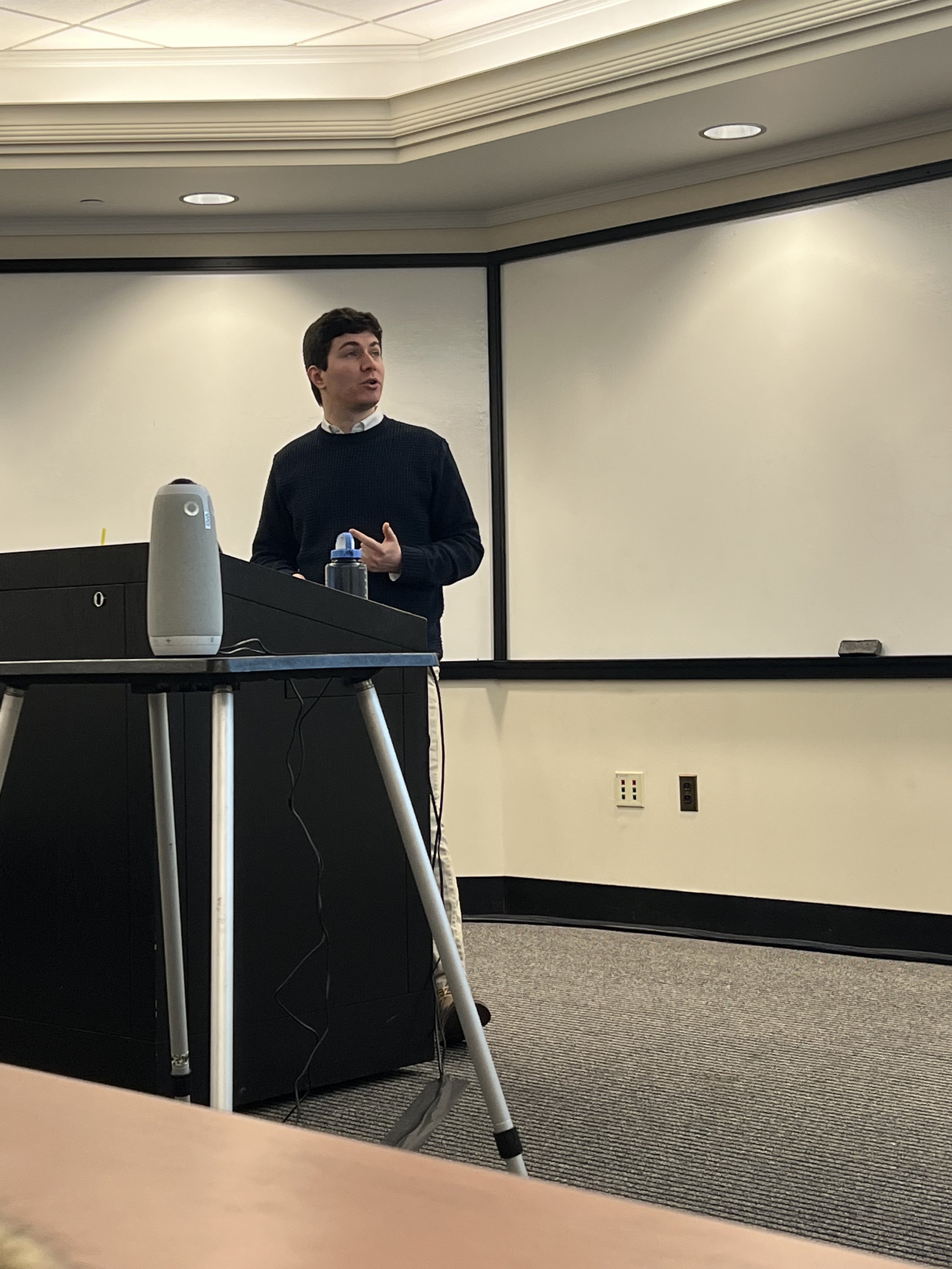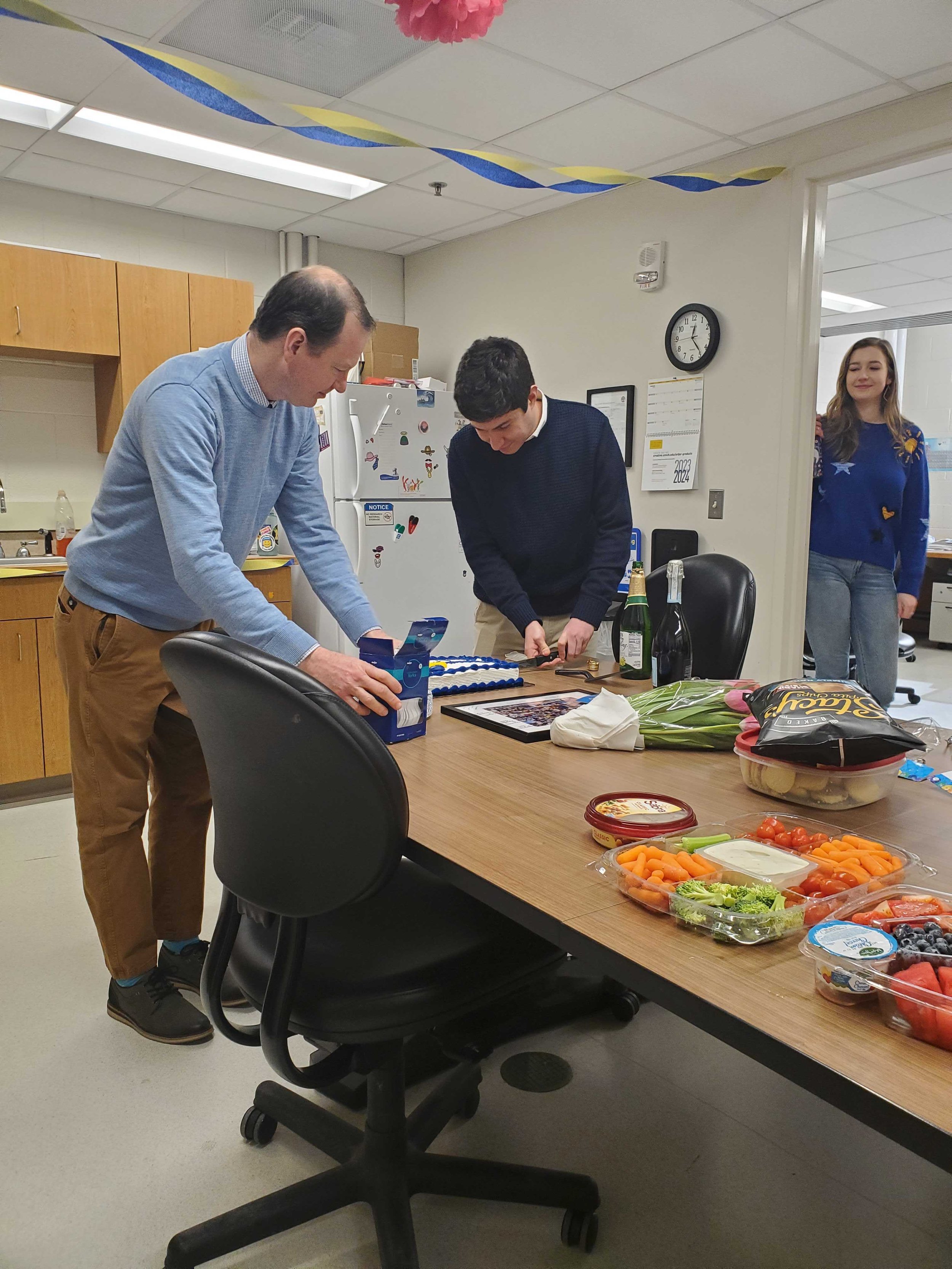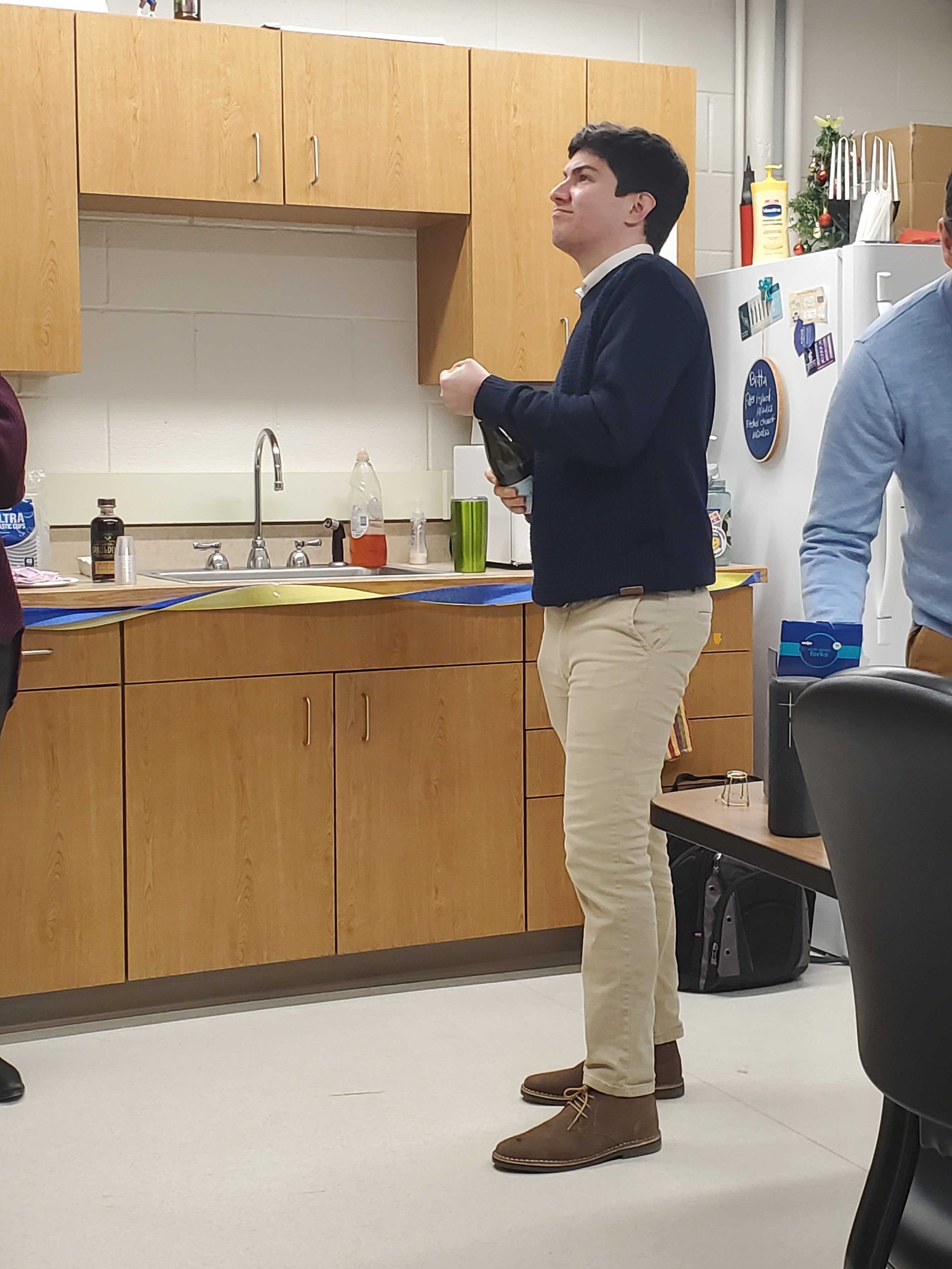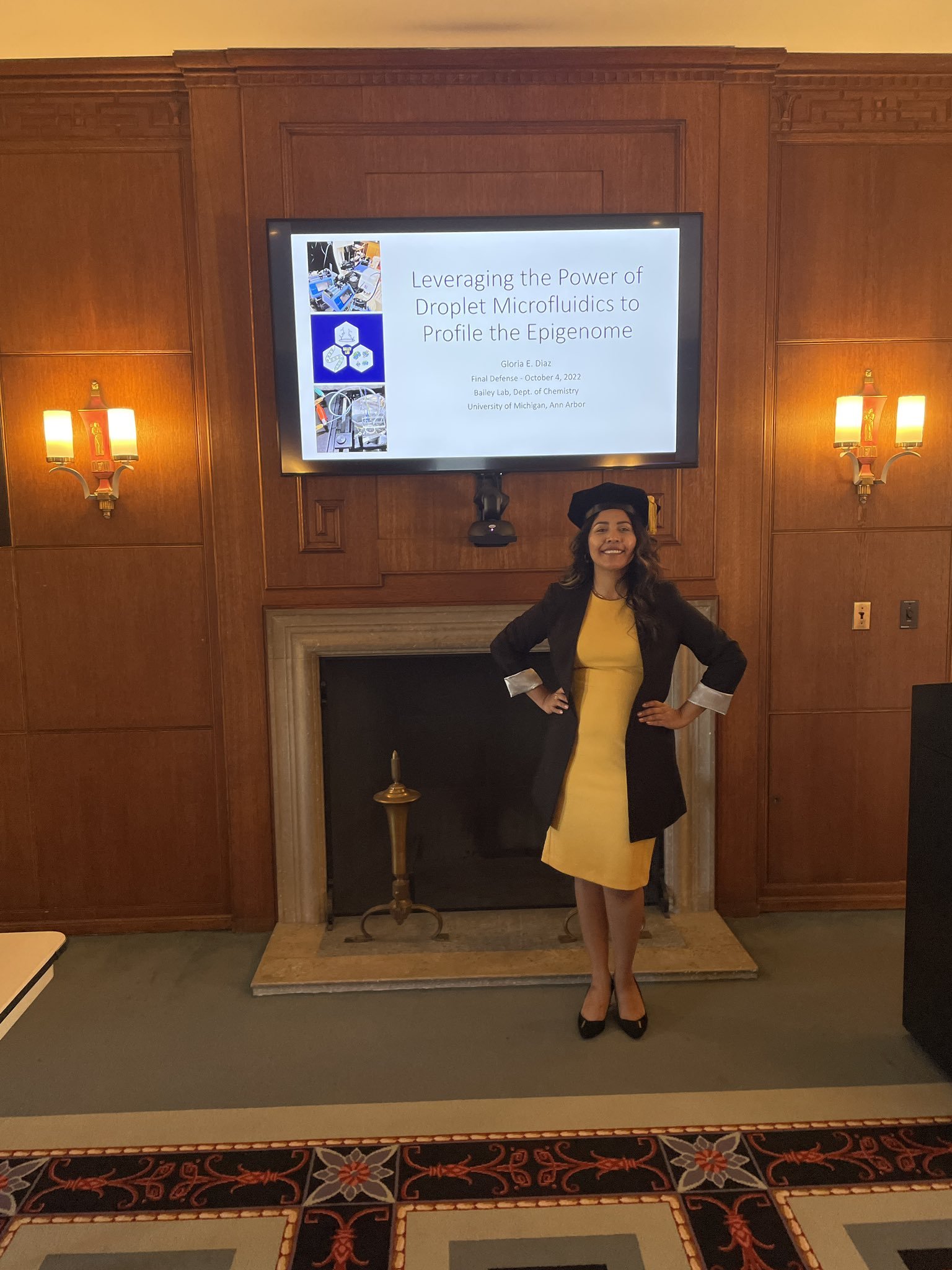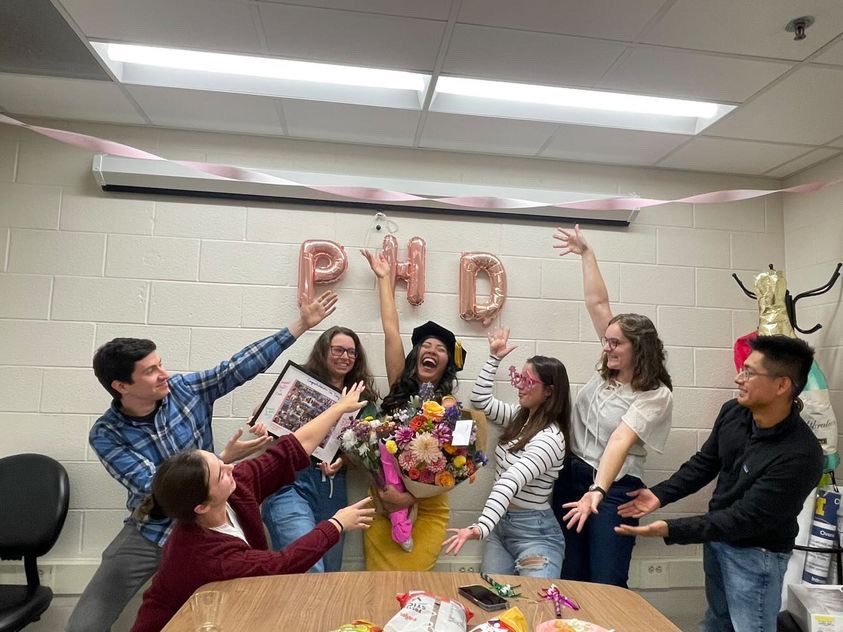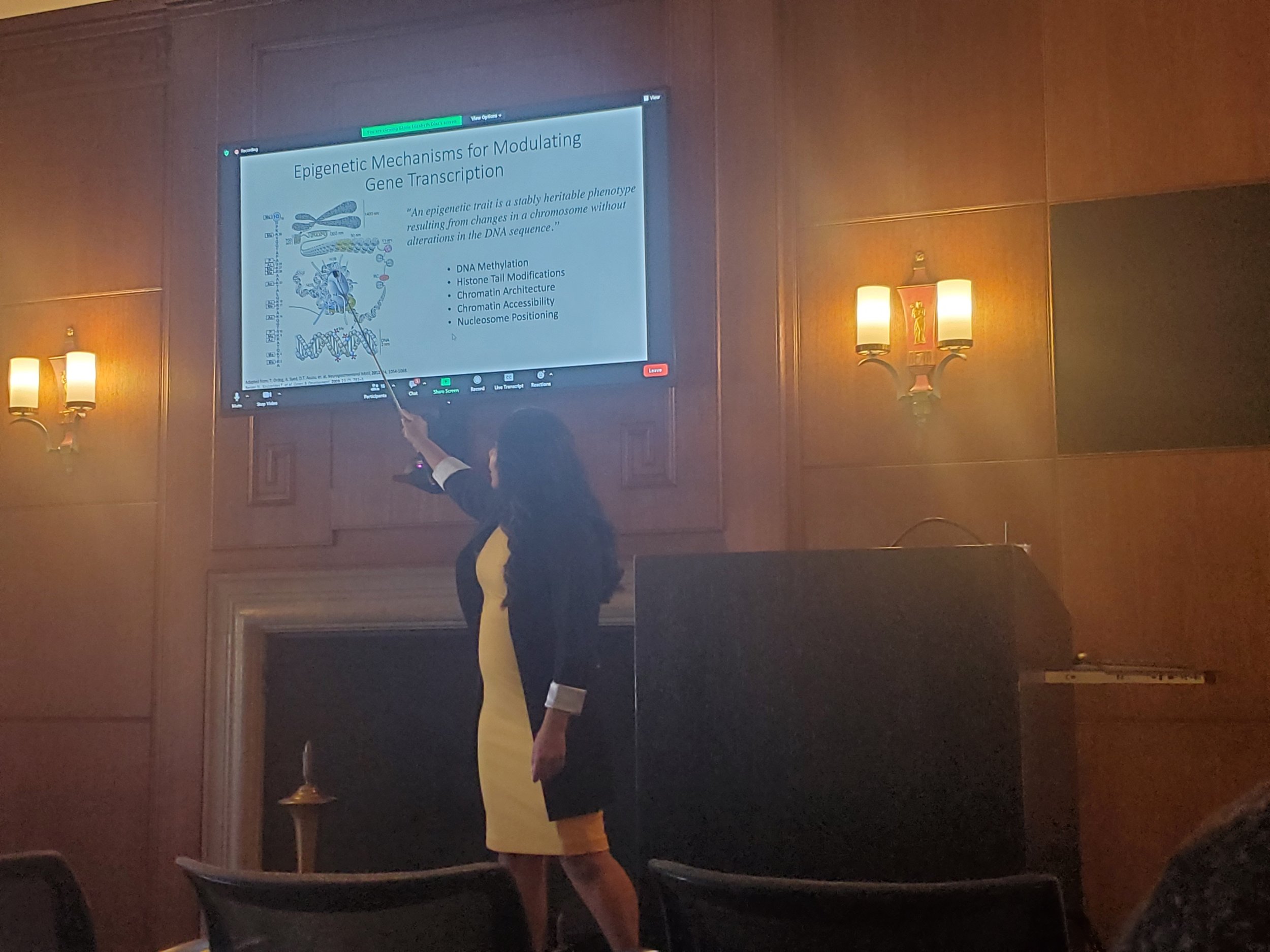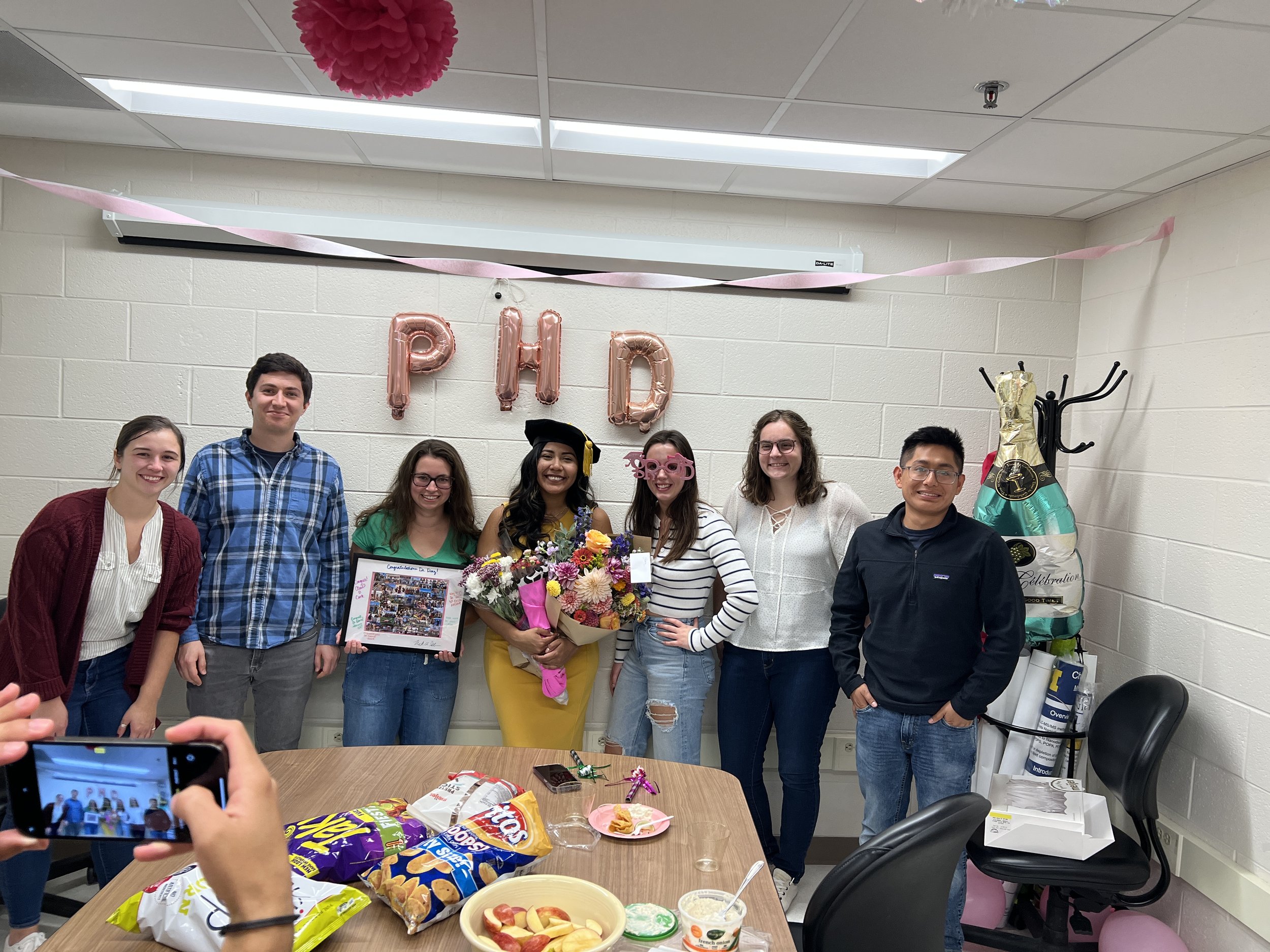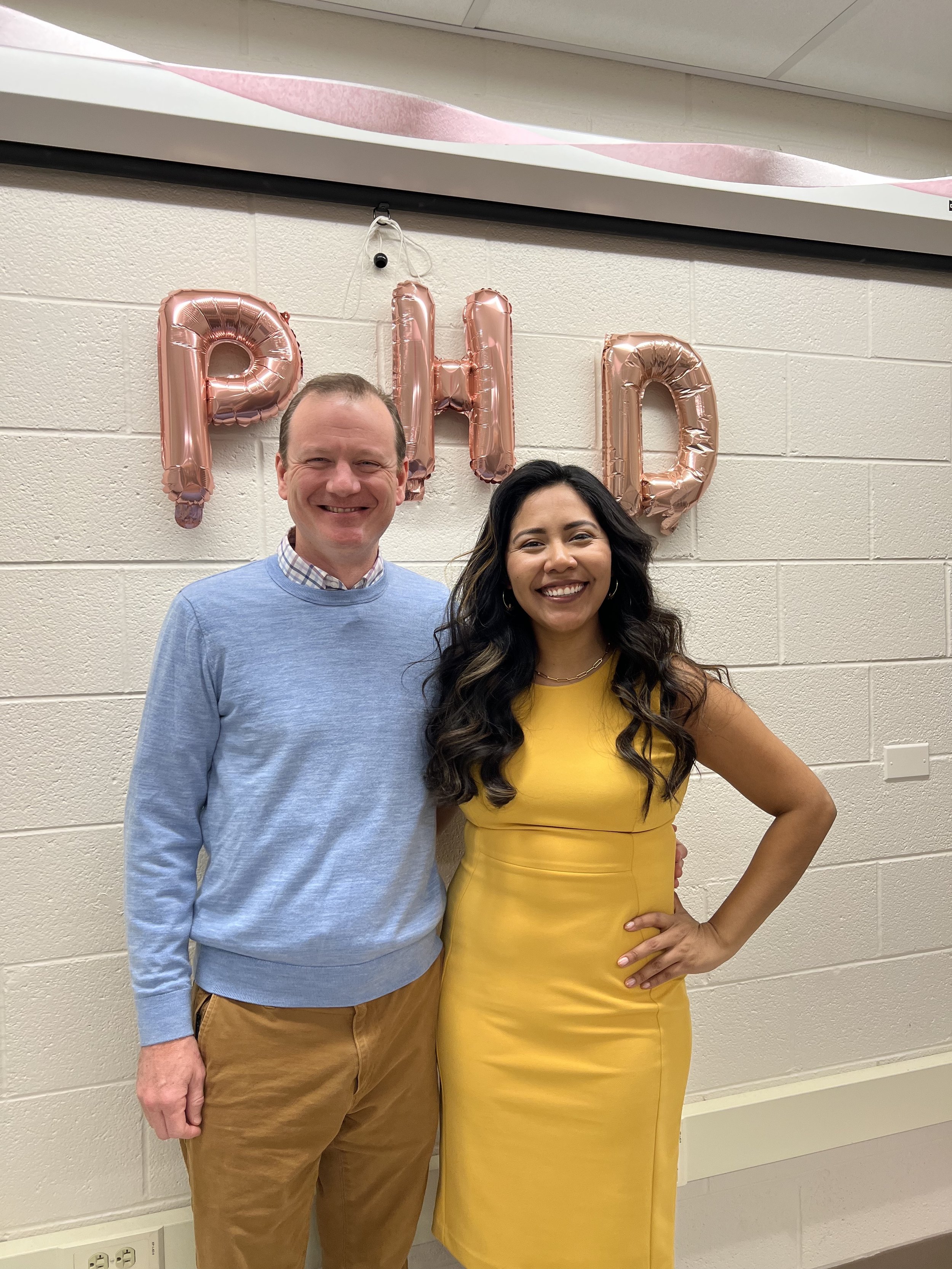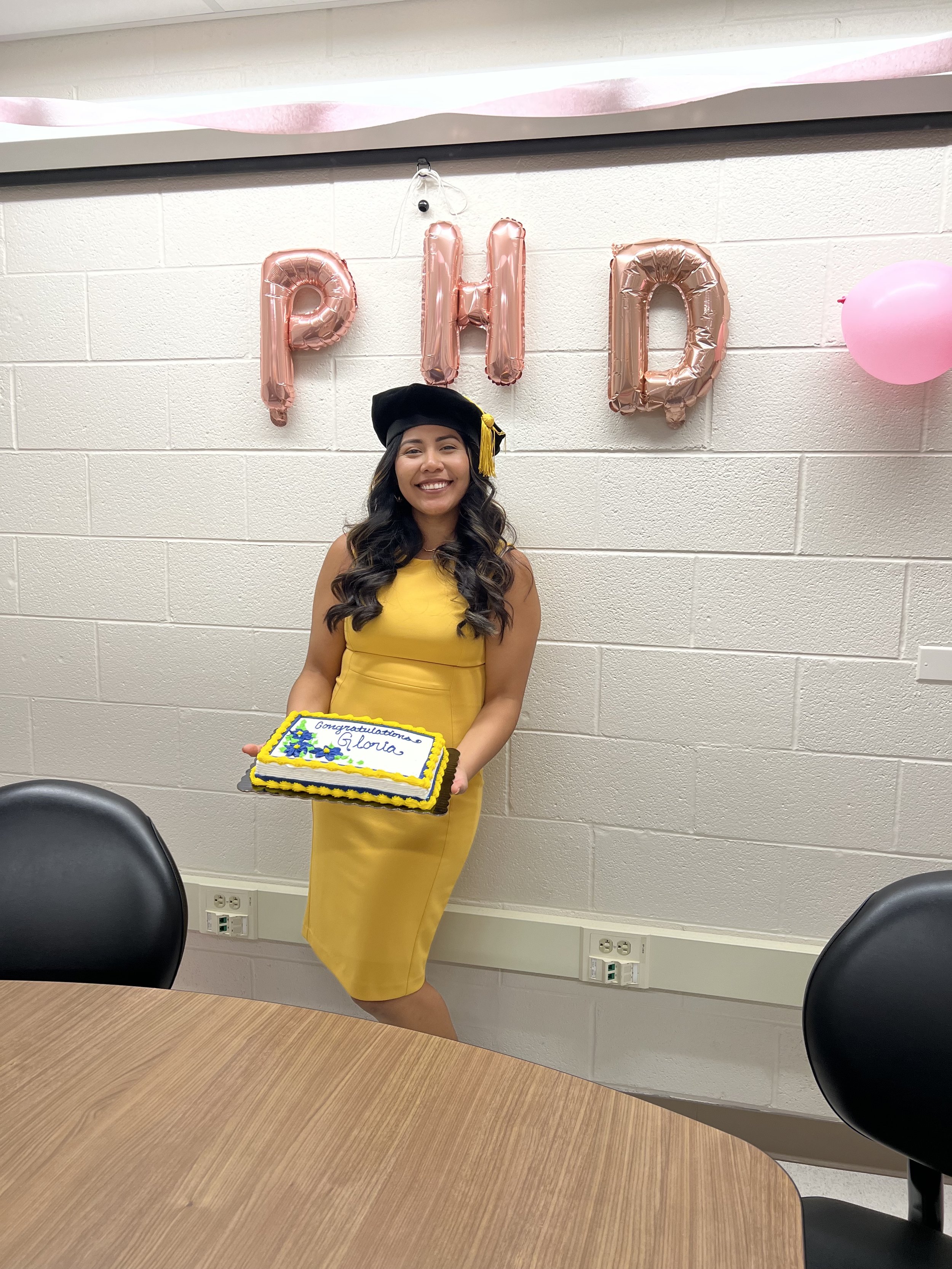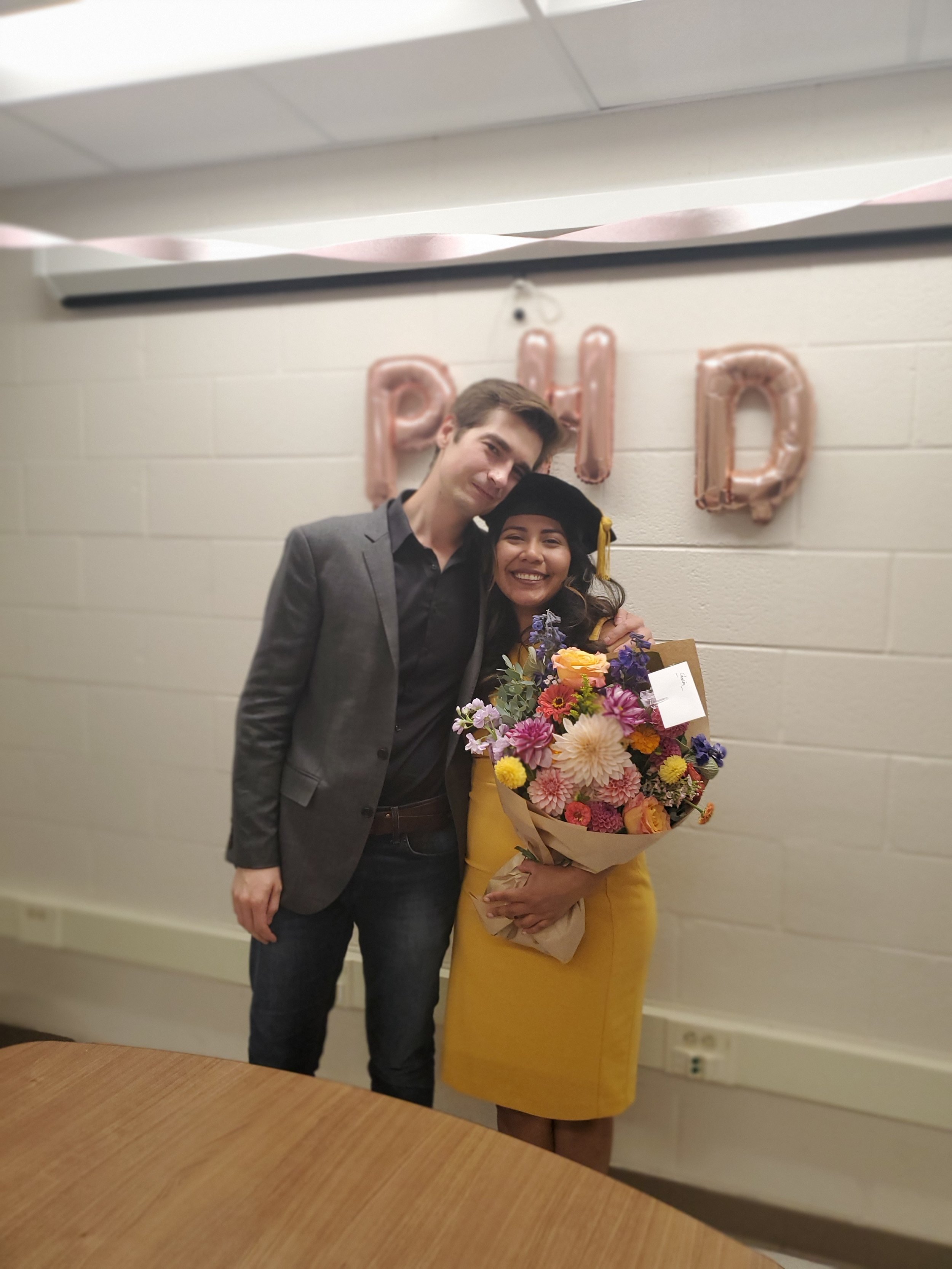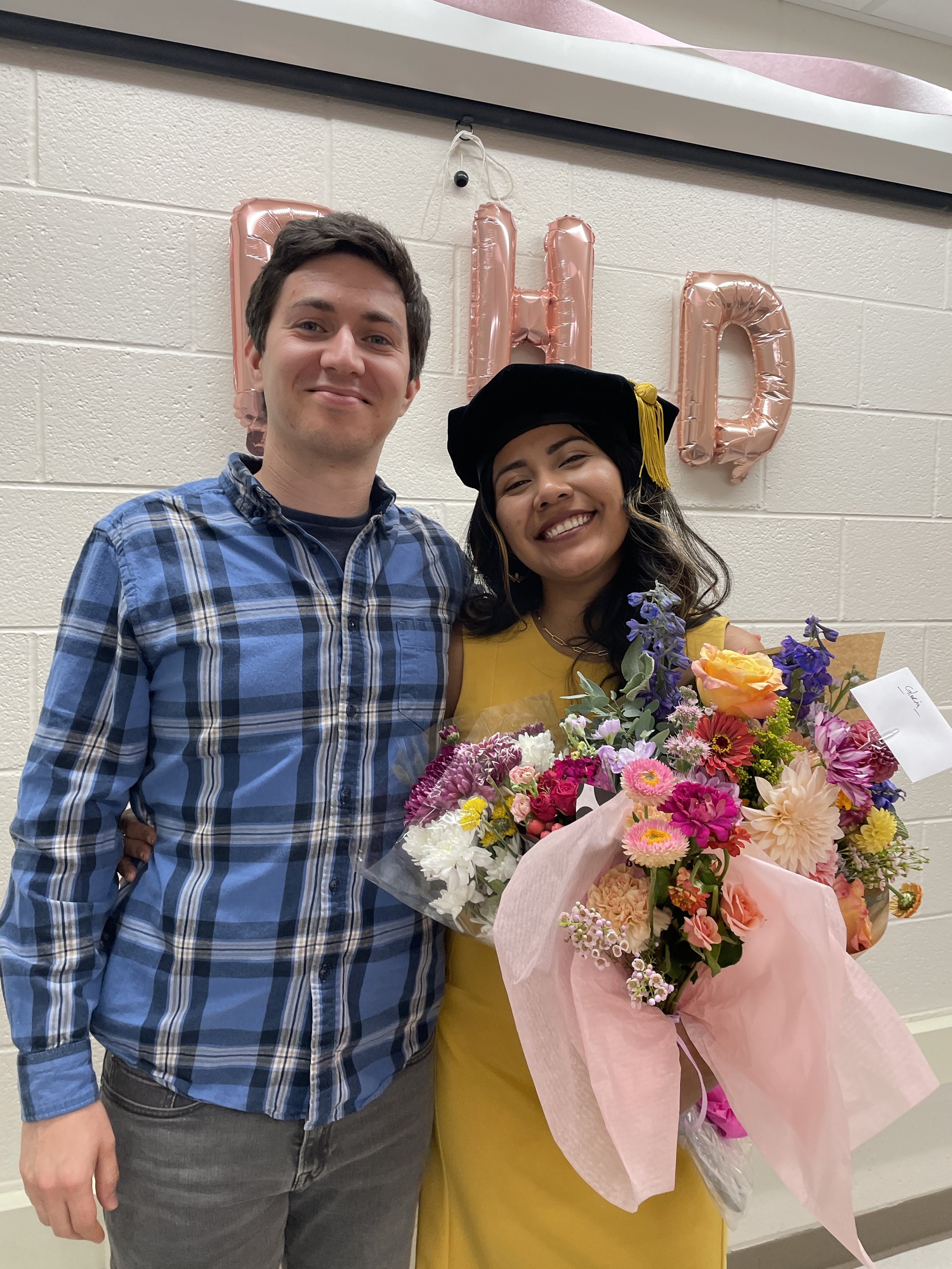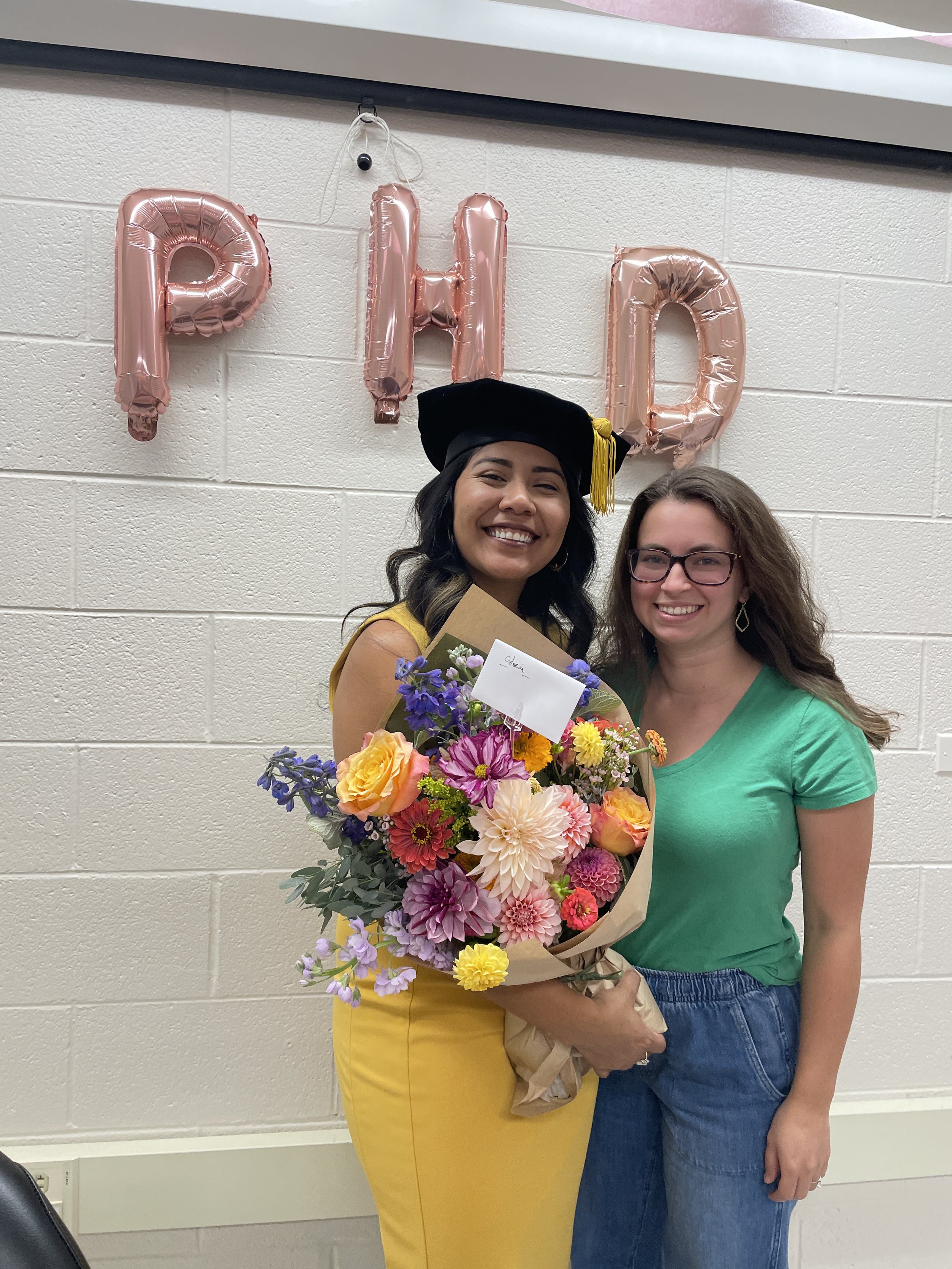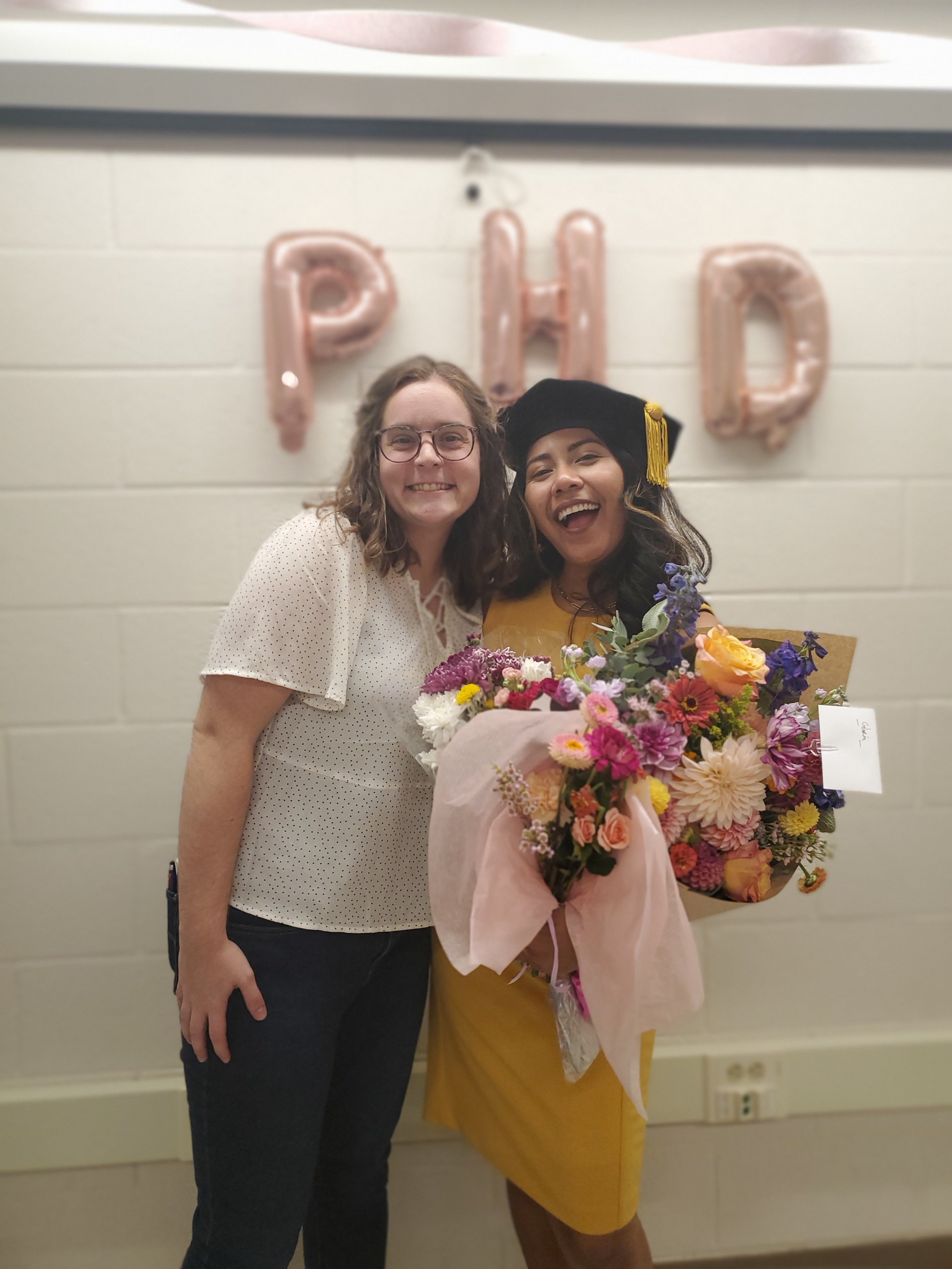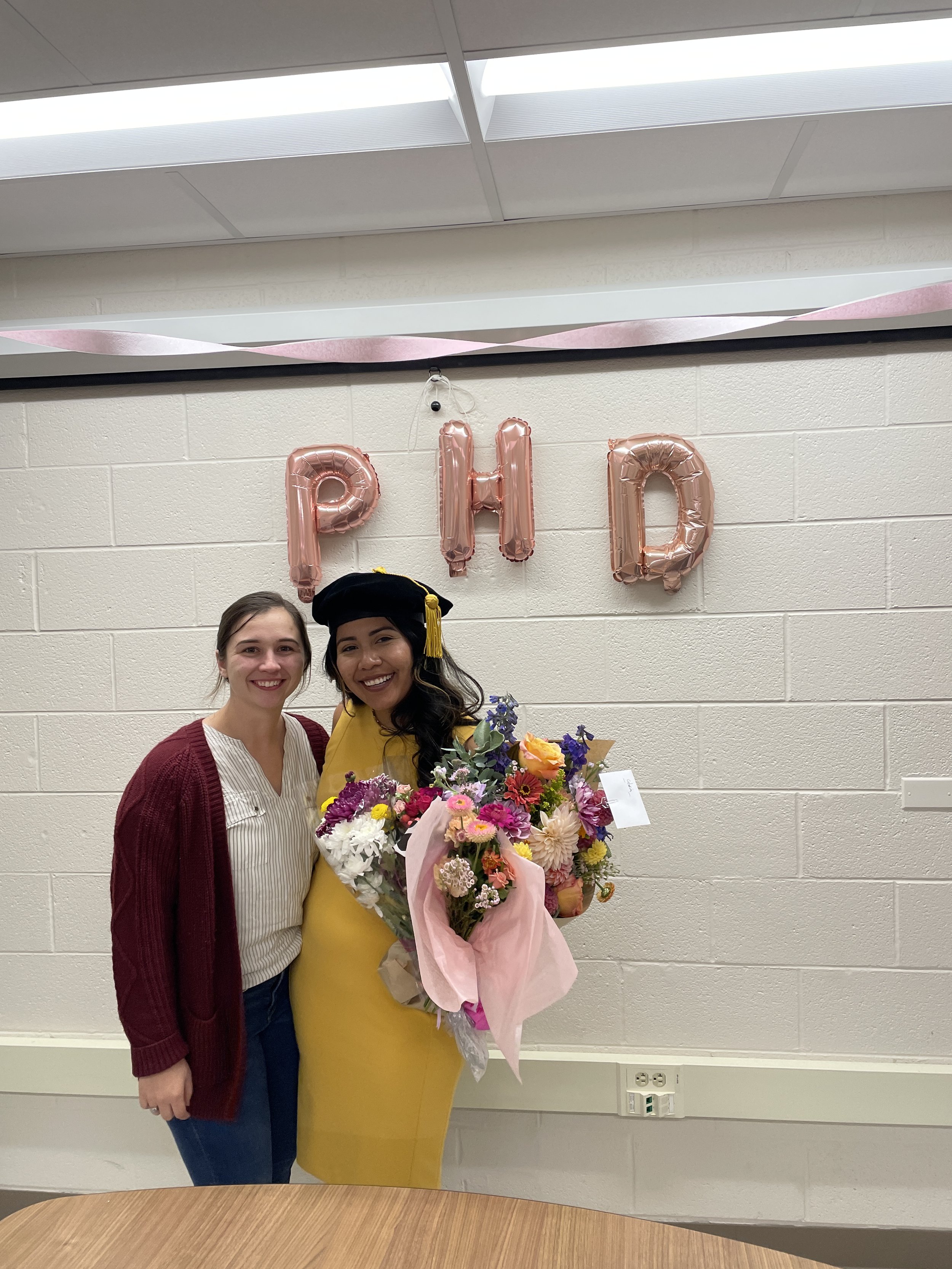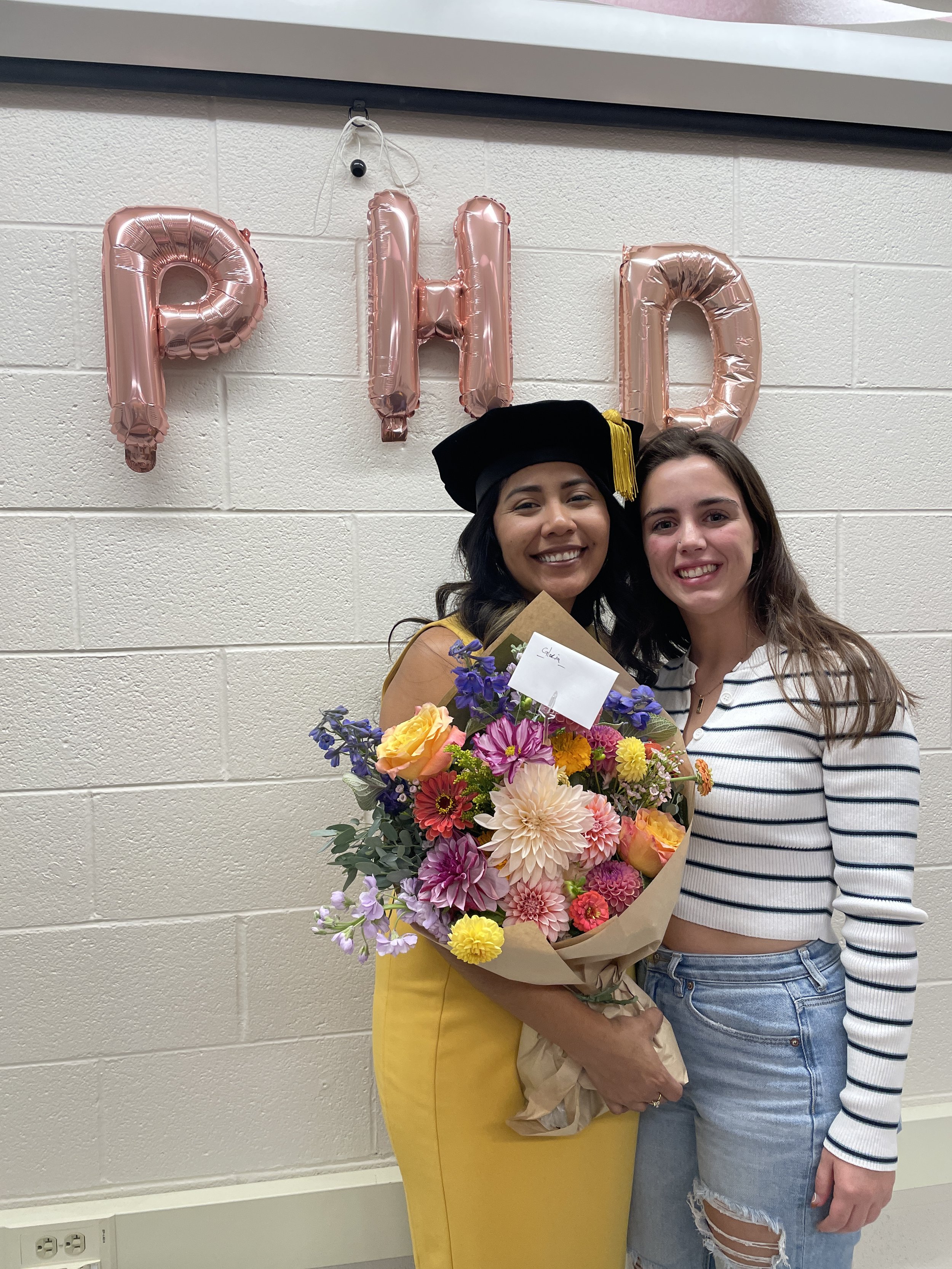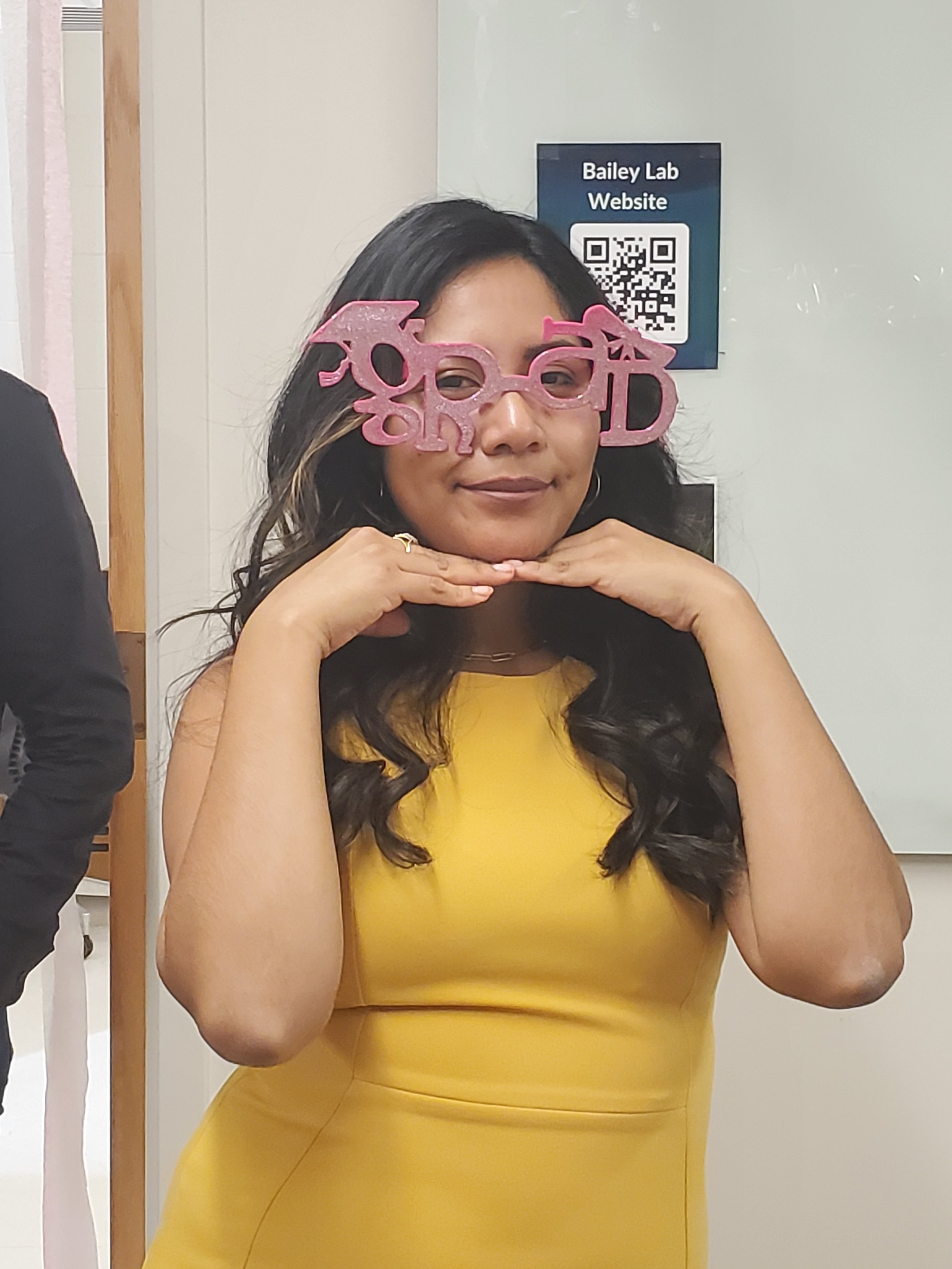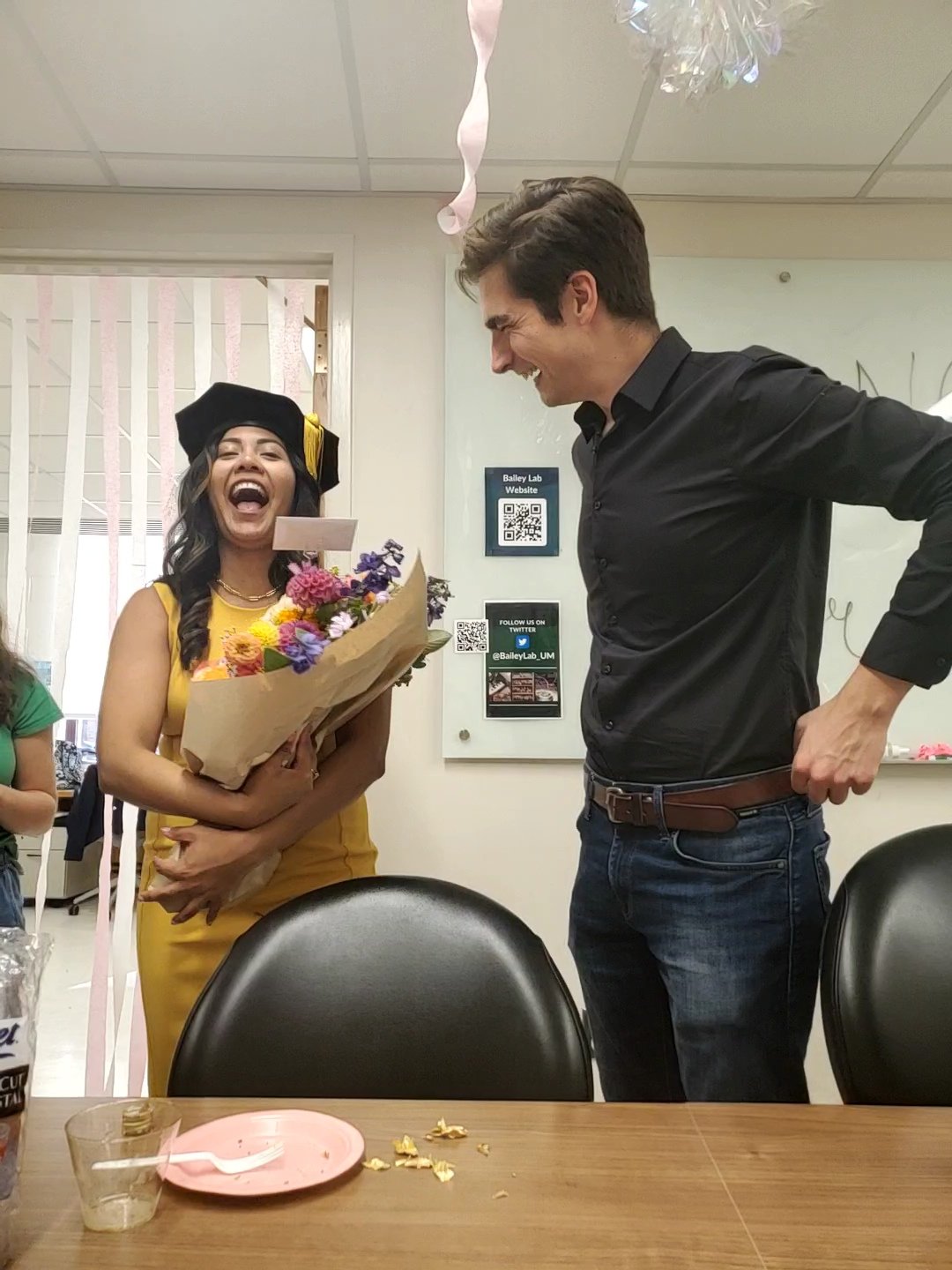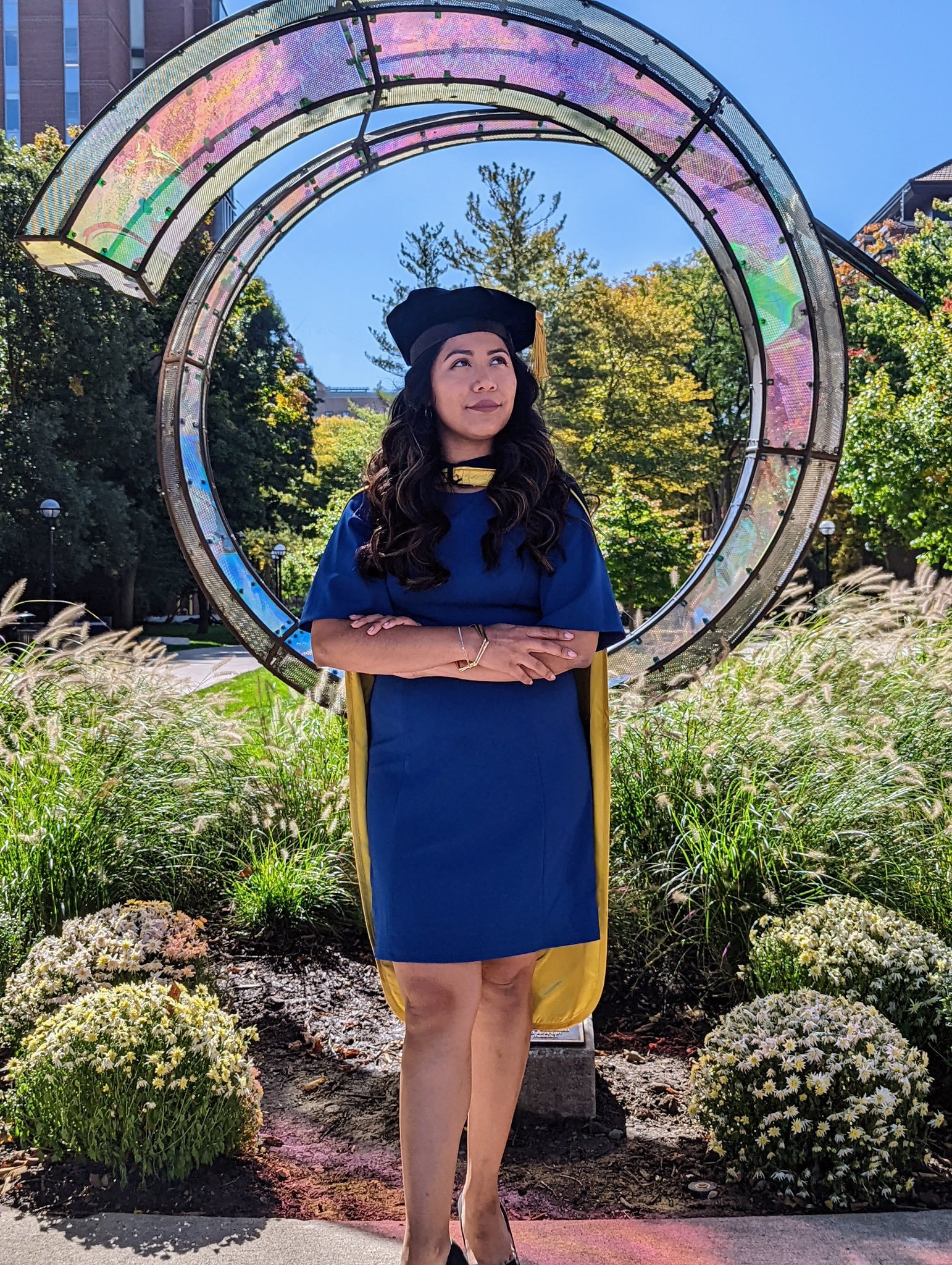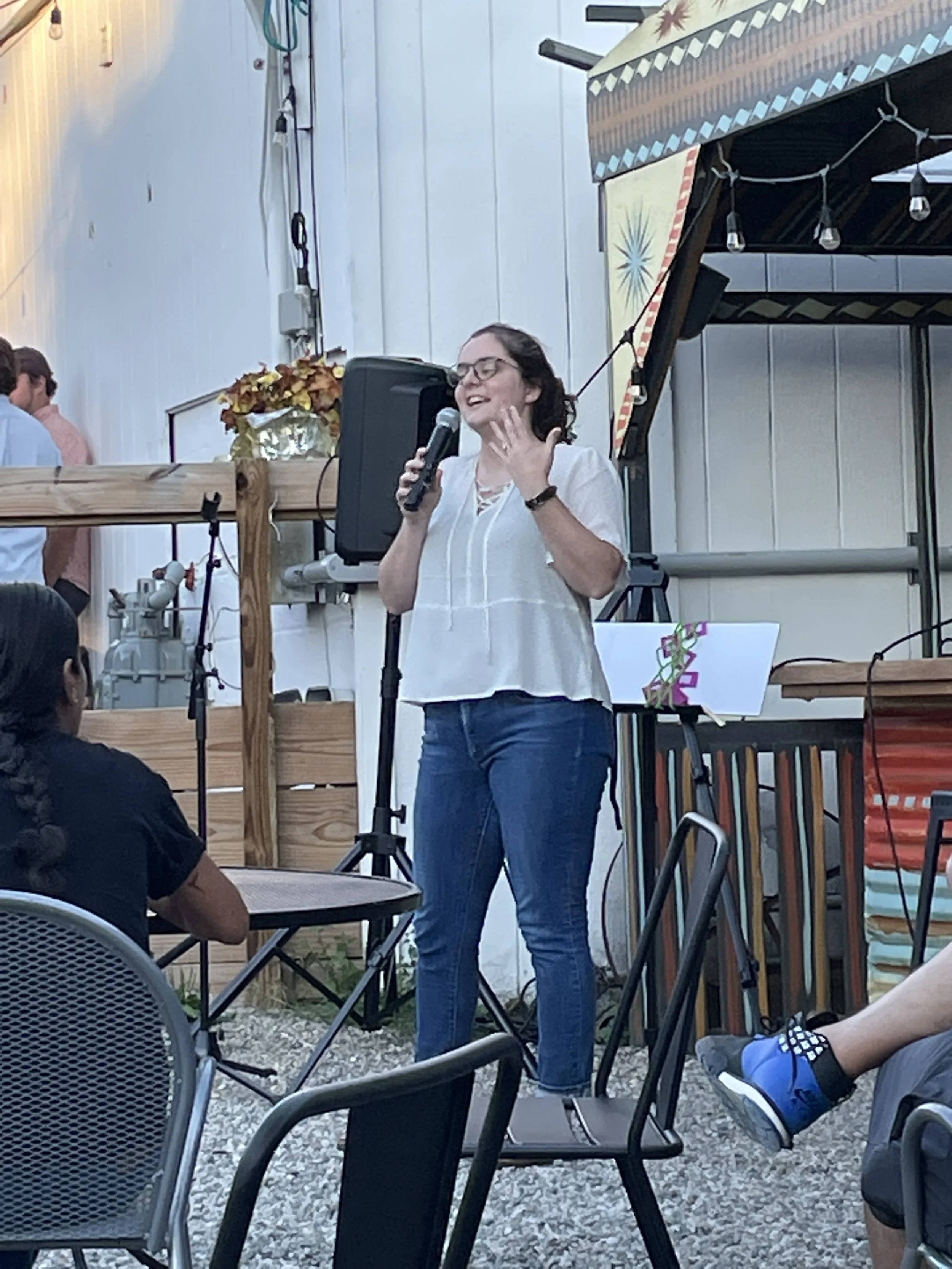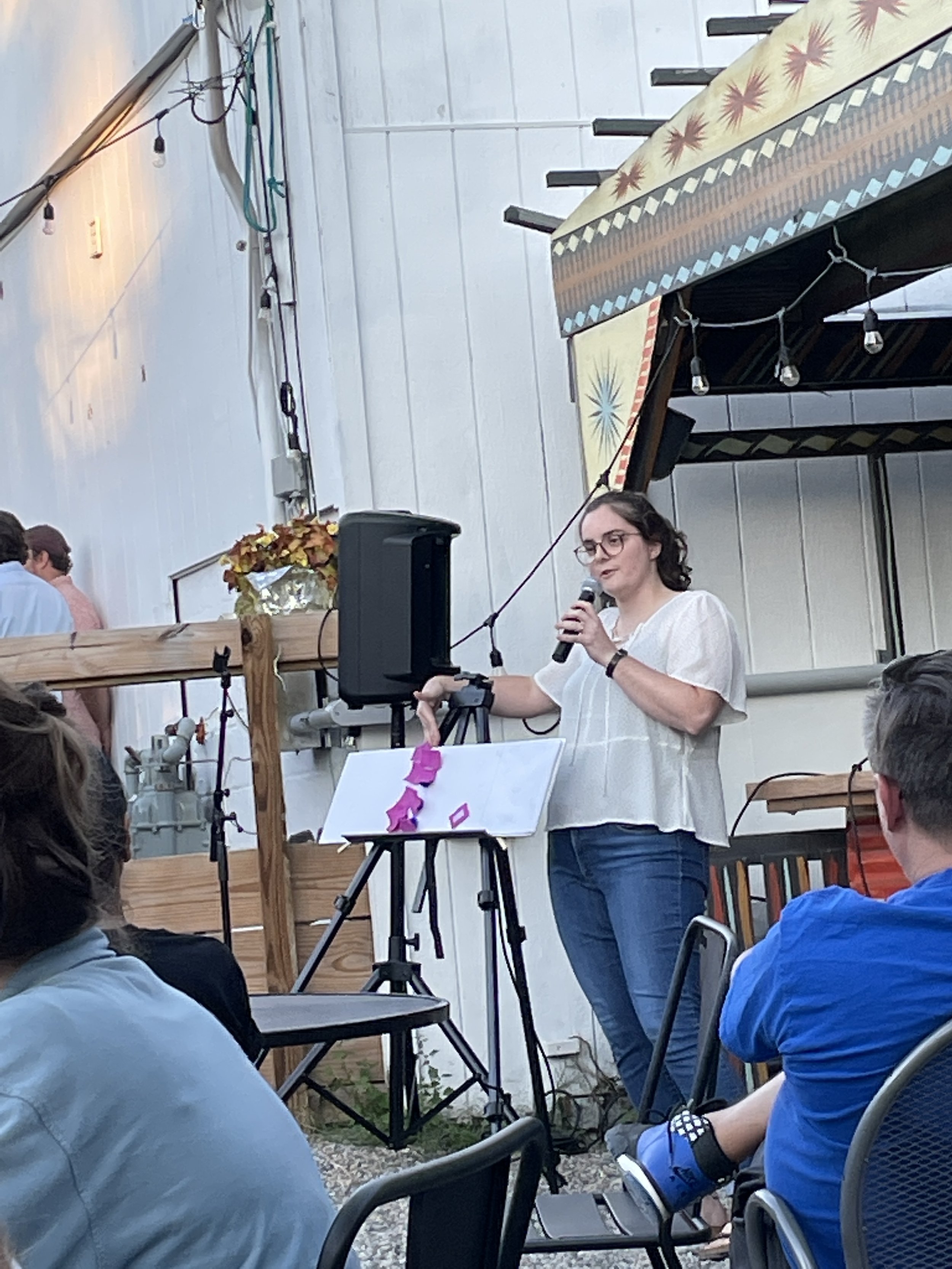A huge congratulations to our undergraduate researcher, Sam Edgcombe, for graduating from the University of Michigan with a Bachelor of Science in Biochemistry and a Bachelor of Science in Women’s and Gender Studies. Sam has been a part of our lab since the summer of 2021 and has contributed to the lab’s research and culture in so many ways. She has been working in collaboration with Marina on identifying the influence of detergents and other mixture components on the formation of nanodiscs.
Sam has presented her work at numerous poster sessions, including the ANACHEM symposium, the URANIUM symposium, and recently at the Pharmacological Sciences and Bio-related Chemistry symposium. She completed an undergraduate thesis on her work toward nanodisc optimization and assessment. She was awarded the department’s 2023 American Chemical Society award in Analytical Chemistry, presented to an outstanding undergraduate student in the field. Sam has also been a leader on campus, serving as a co-coordinator for a volunteer group within the Sexual Assault Prevention and Awareness Center (SAPAC) at UM.
Sam will be starting as a Research Analytical Chemist at Eli Lily in June. Bailey Lab members are incredibly proud of Sam and her accomplishments, both in and out of the lab. It has been a pleasure to watch Sam grow into an independent scientist and we have no doubt she will contribute greatly in her new role at Eli Lilly. Congrats Sam!!
